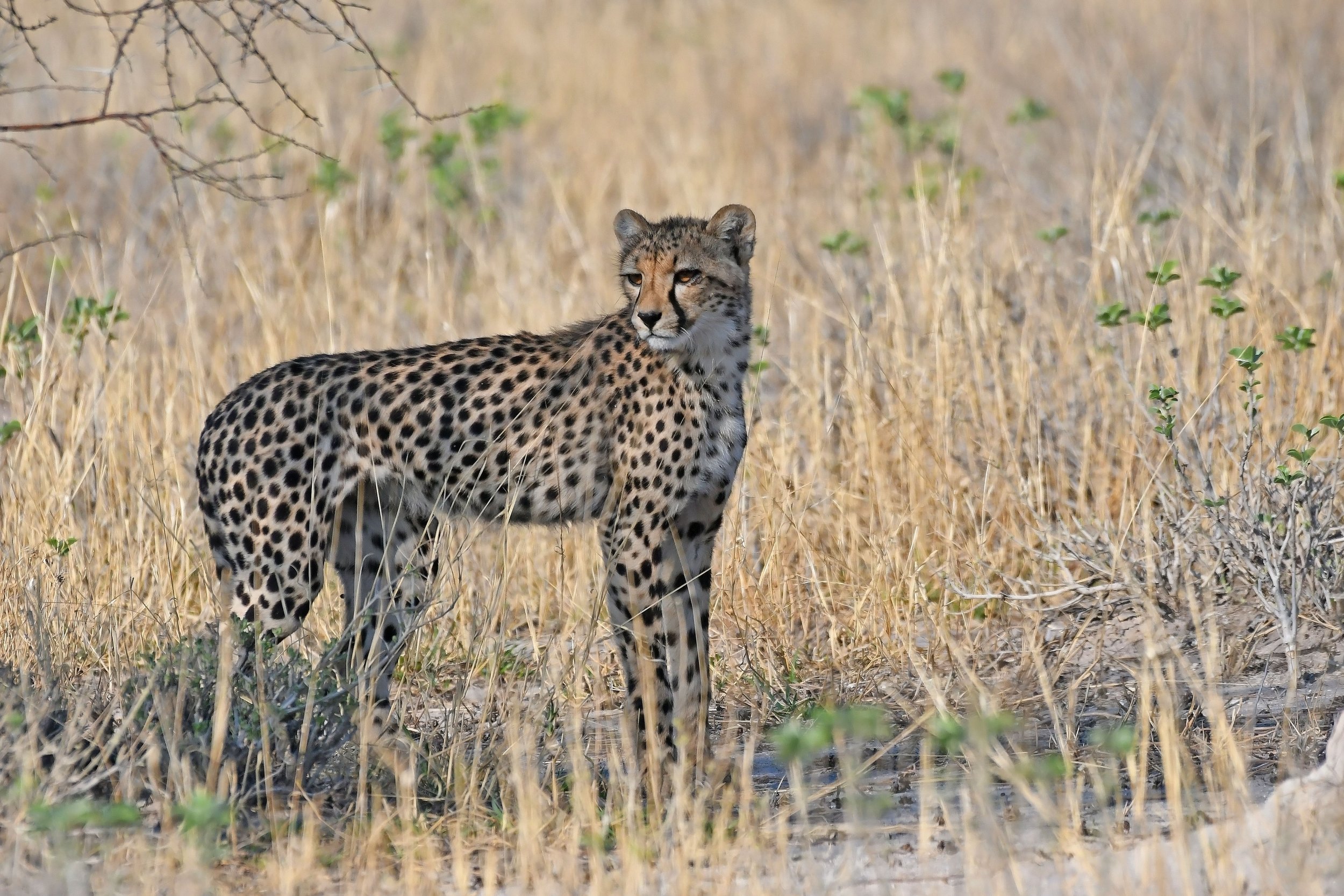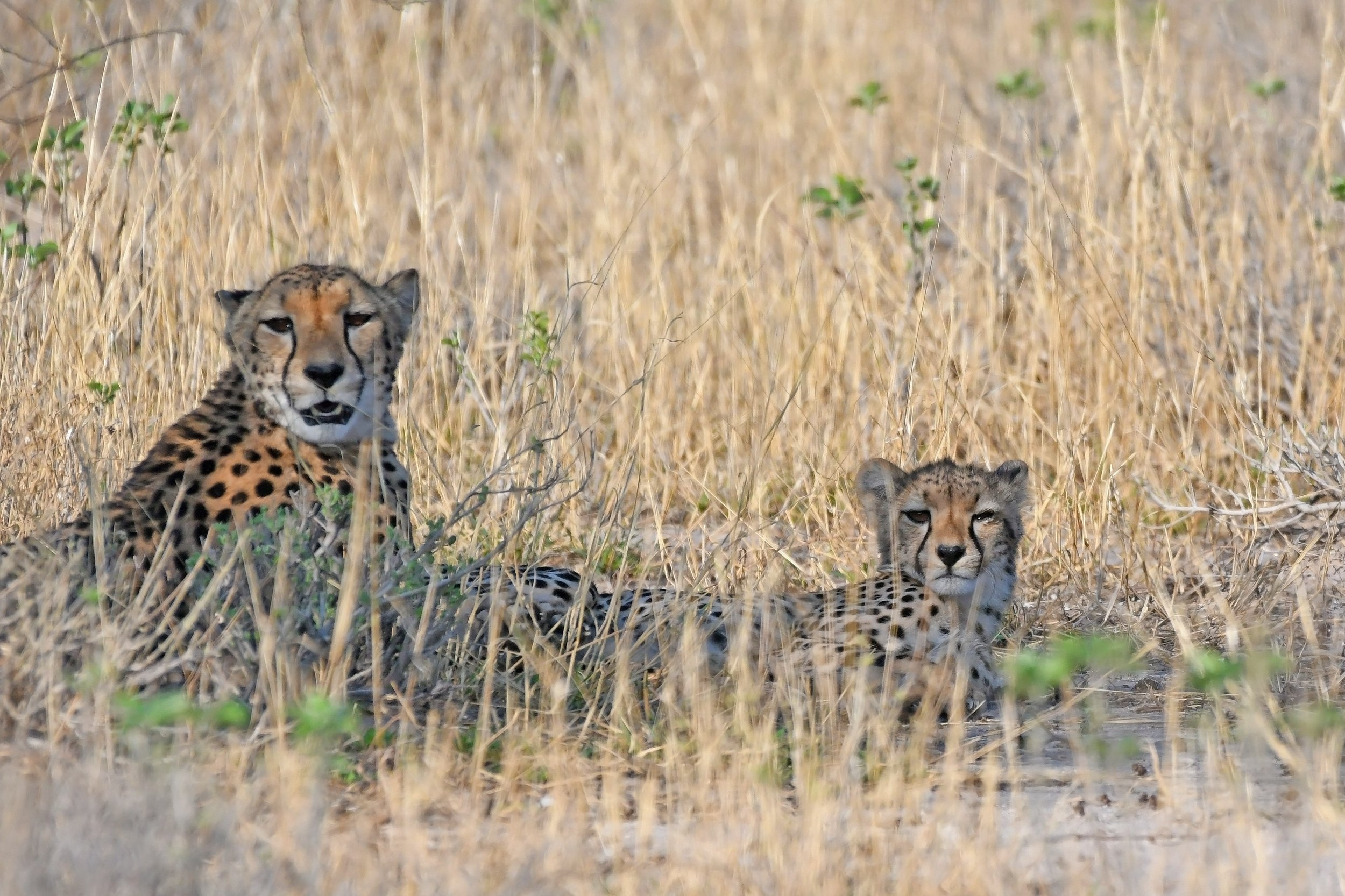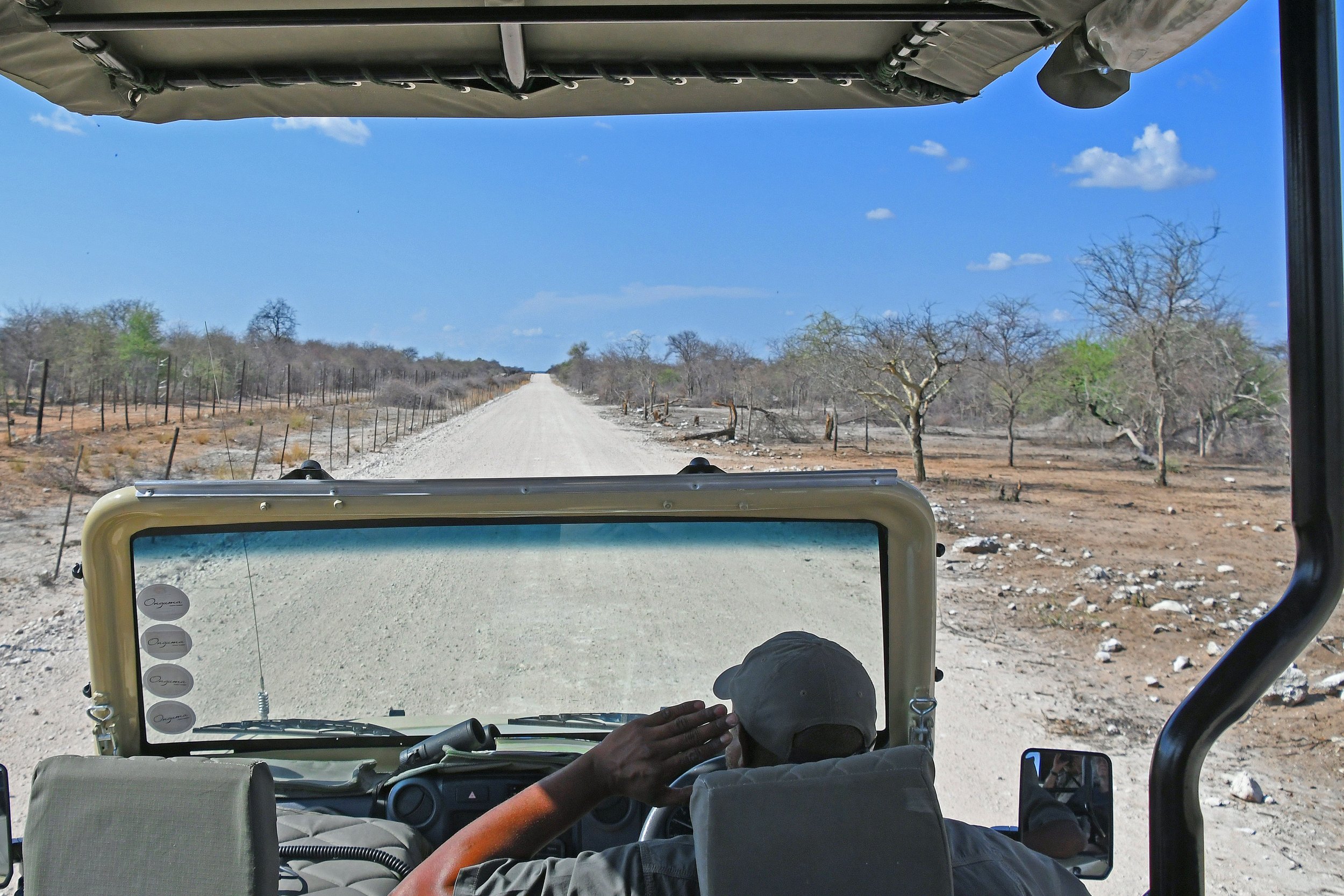
Straight Ahead
With nothing to obstruct the road from the landing strip to the Onguma Game Reserve in Northern Namibia, it is a short drive to the lodge. The 34,000 ha (84,000 acres) reserve is located directly to the east of the well-known Etosha National Park. The fence to the left marks the boundary of the national park.
Onguma Game Reserve, Namibia
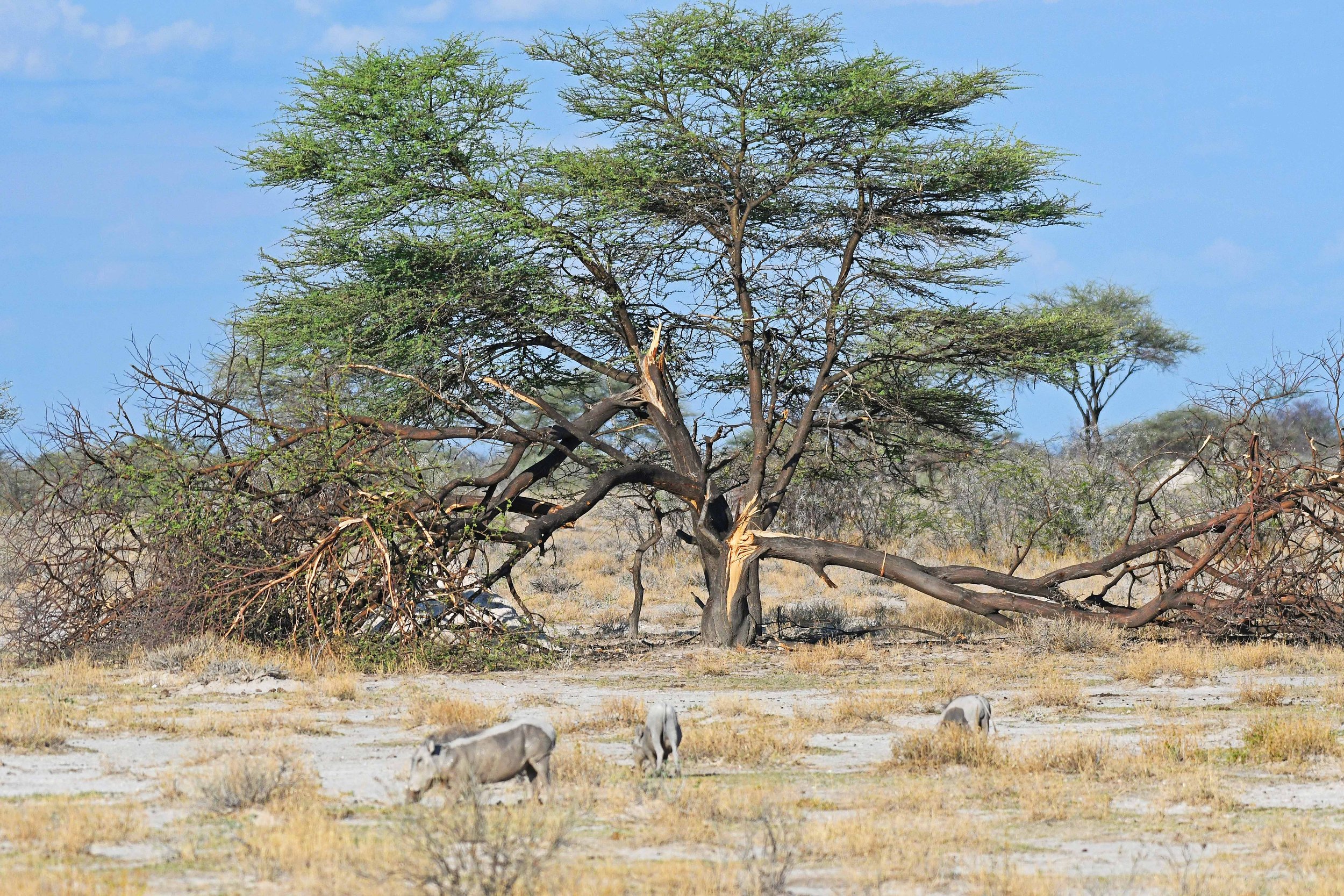
Farmers Have a Point
One of many causes for a decline in the African elephant population is animal-human conflict. Elephants not only wreak havoc in farmers’ field, they also destroy trees and shrubs.
Onguma Game Reserve, Namibia
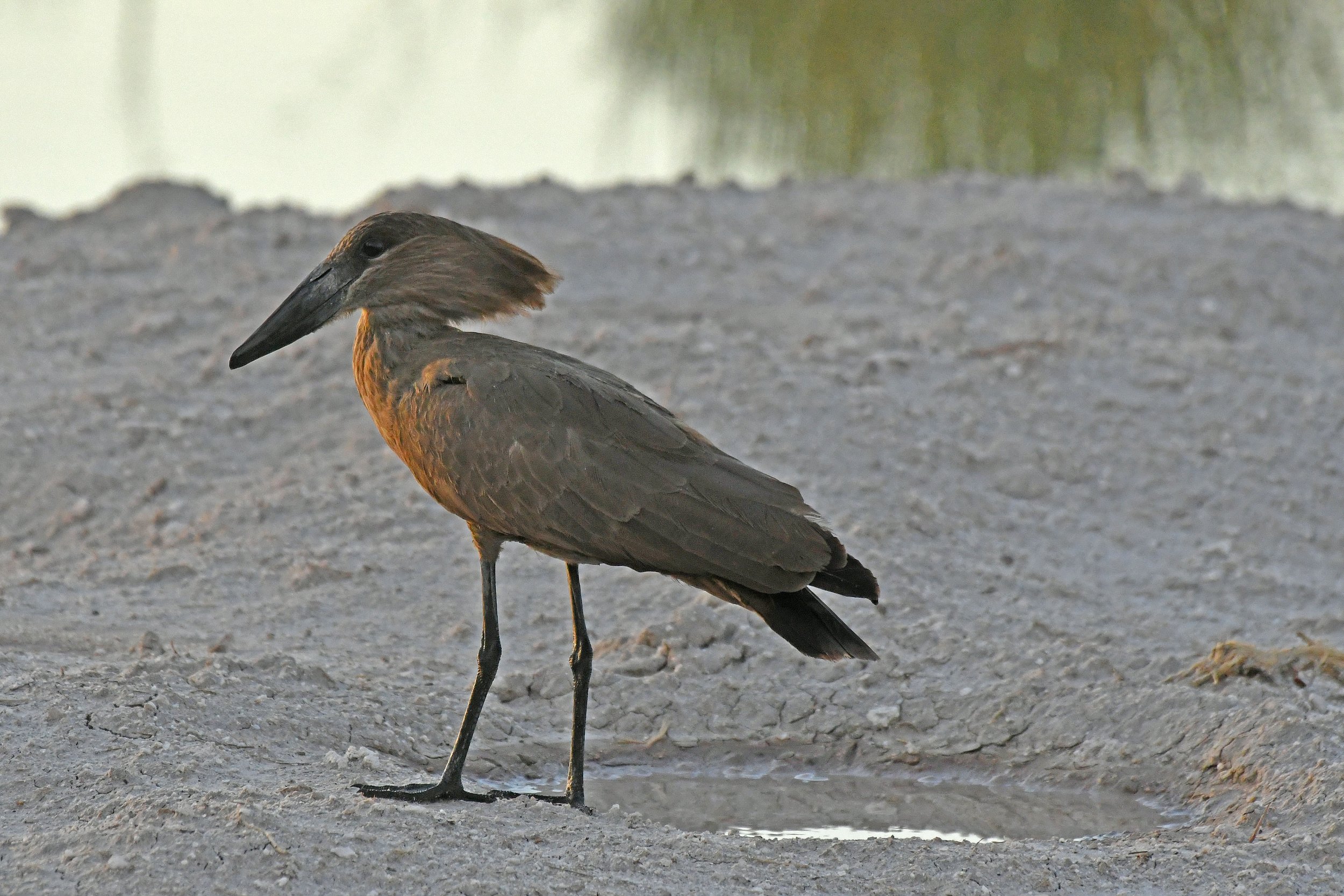
Fond of Water
The hamerkop (Scopus umbretta) is a mid-sized wading bird living close to wetlands. They build enormous nests in the African savanna. Both male and female incubate and raise the chicks.
Onguma Game Reserve, Namibia

It's a Pile of Mongoose
The banded mongoose (Mungos mungo) lives in small groups of 20 individuals, on average. They sleep in dens (burrows) and abandoned termite mounds, but change sleeping quarters every 2 to 3 days. When new shelter cannot be found, they sleep above ground on top of each other with their heads facing outward. African wild dogs are the mongooses’ main predator.
Onguma Game Reserve, Namibia
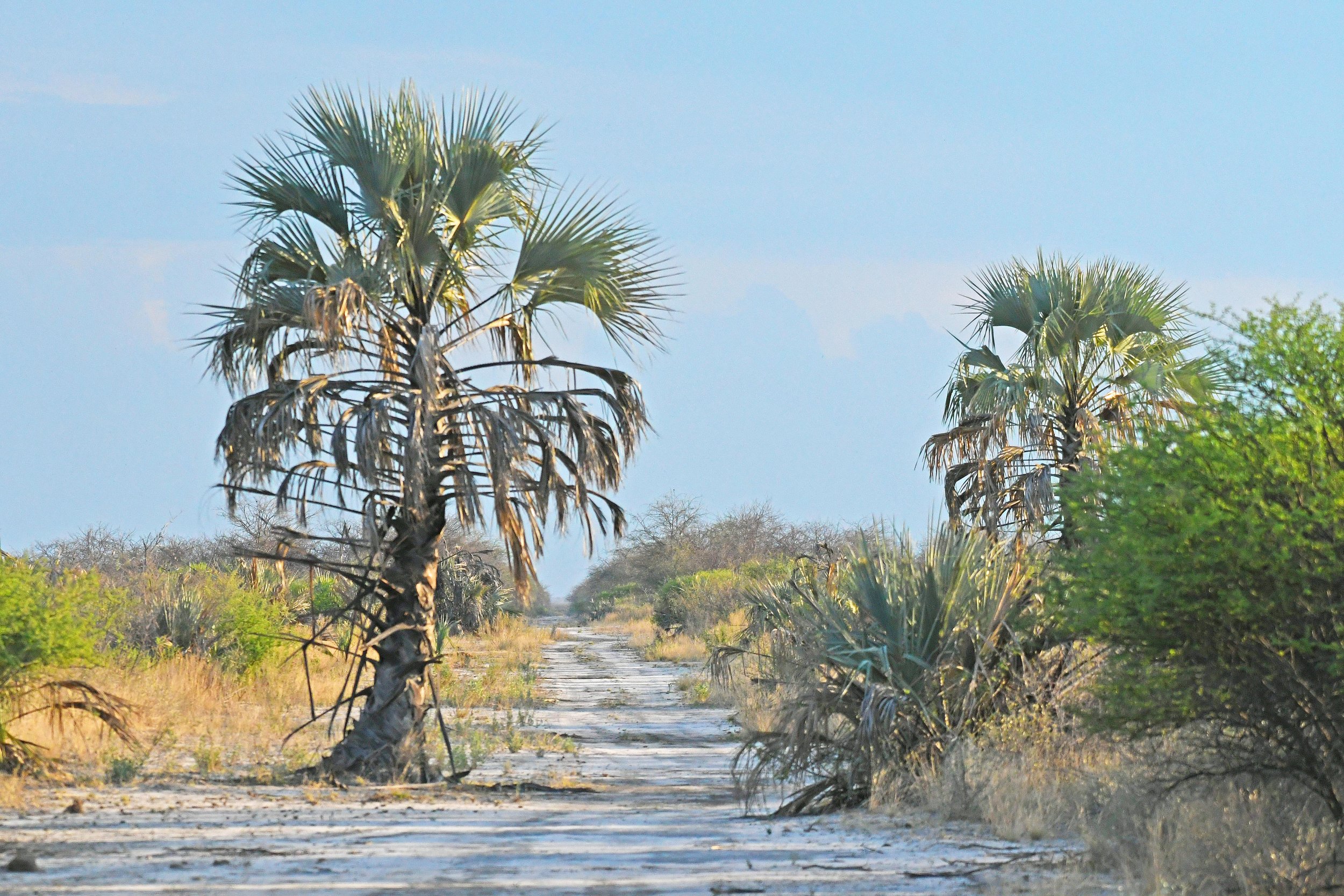
Poacher's Territory
Poaching is a dangerous occupation, but how do you spot poachers in a 34,000 ha (84,000 acres) game reserve? To avoid detection, poachers strap animal hooves to their shoes. If spotted, unarmed poachers are arrested and turned over to police. Armed poachers usually put up a fight and end up dead.
Onguma Game Reserve, Namibia
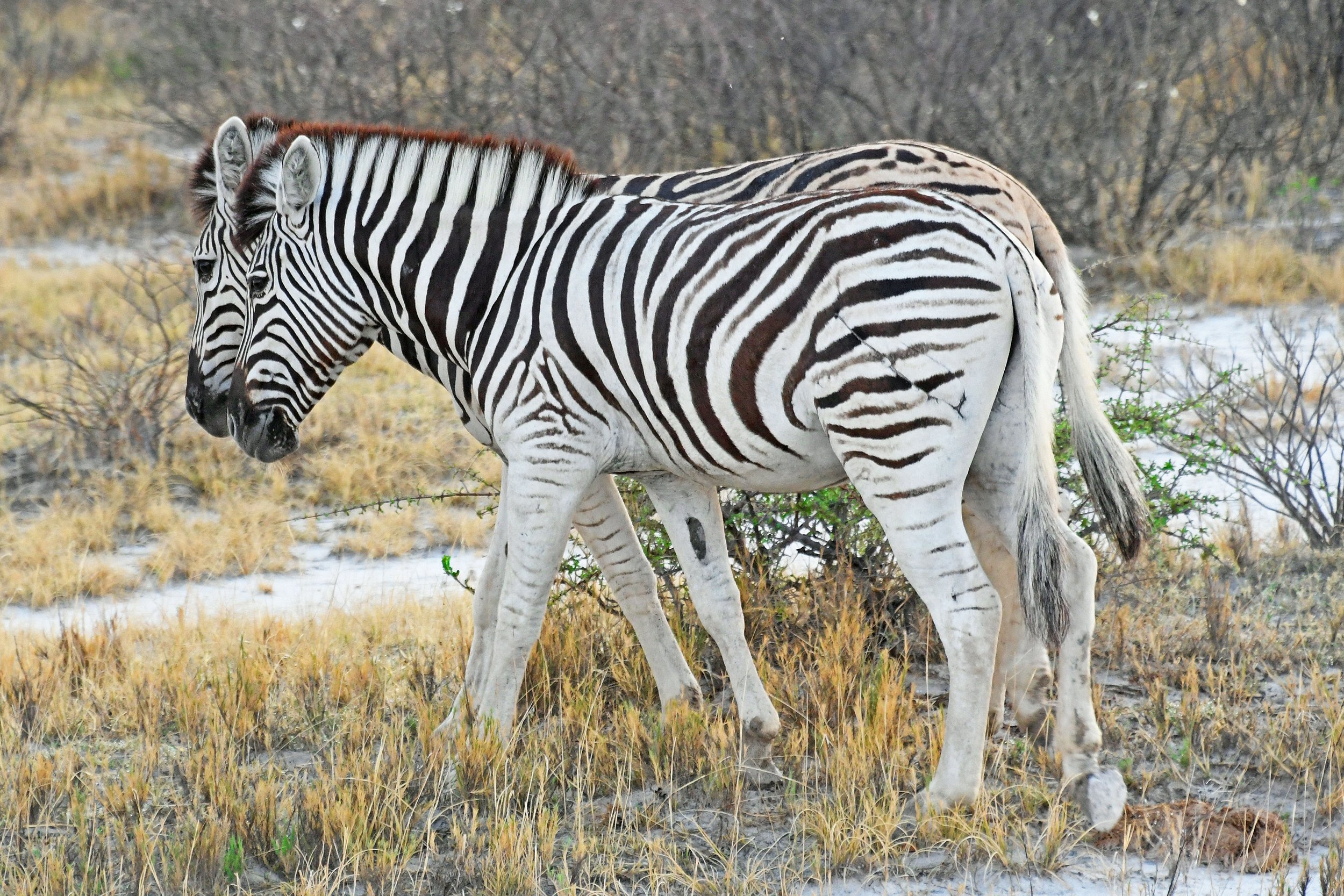
Burchell's zebras (Equus quagga burchellii)
Onguma Game Reserve, Namibia
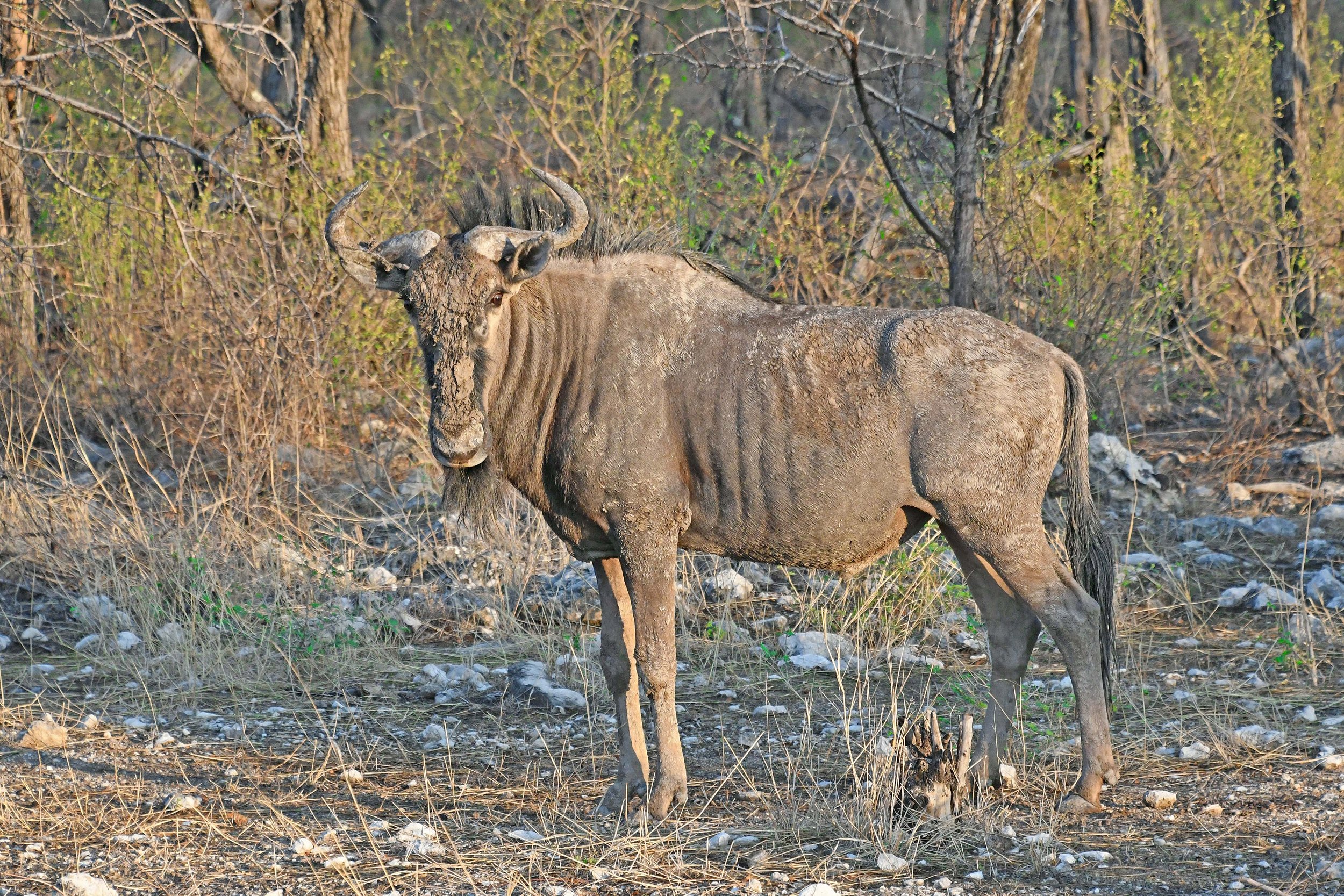
Bottom of the Food Chain?
The blue wildebeest (Connochaetes taurinus) can run up to 80 km/h (50 mi/h) and lives, on average, 20 years. The list of predators chasing after wildebeests is long. No wonder they are such wary animals.
Onguma Game Reserve, Namibia

Don't be so Picky
With only 1,500 individuals roaming the savanna of Etosha National Park and a total of 3,000 remaining world-wide, the black-faced impala (Aepyceros melampus petersi) is an endangered species. Still, it is one of Namibia’s greatest conservation success stories. The black-faced impala was nearly wiped out in the 1960s when only a few hundred of this rare antelope species were left. Being picky about their habitat and water supply doesn’t help, of course. Newborn lambs also have a very high mortality rate (75%).
Etosha National Park, Namibia

A Bird that Walks
Being the heaviest flying bird in Africa isn’t easy. After all, the kori bustard (Ardeotis kori) weighs up to 19 kg (42 lbs) and getting off the ground is a reluctant affair. Once airborne though, the kori bustard’s flight is effordless.
Chobe National Park, Botswana
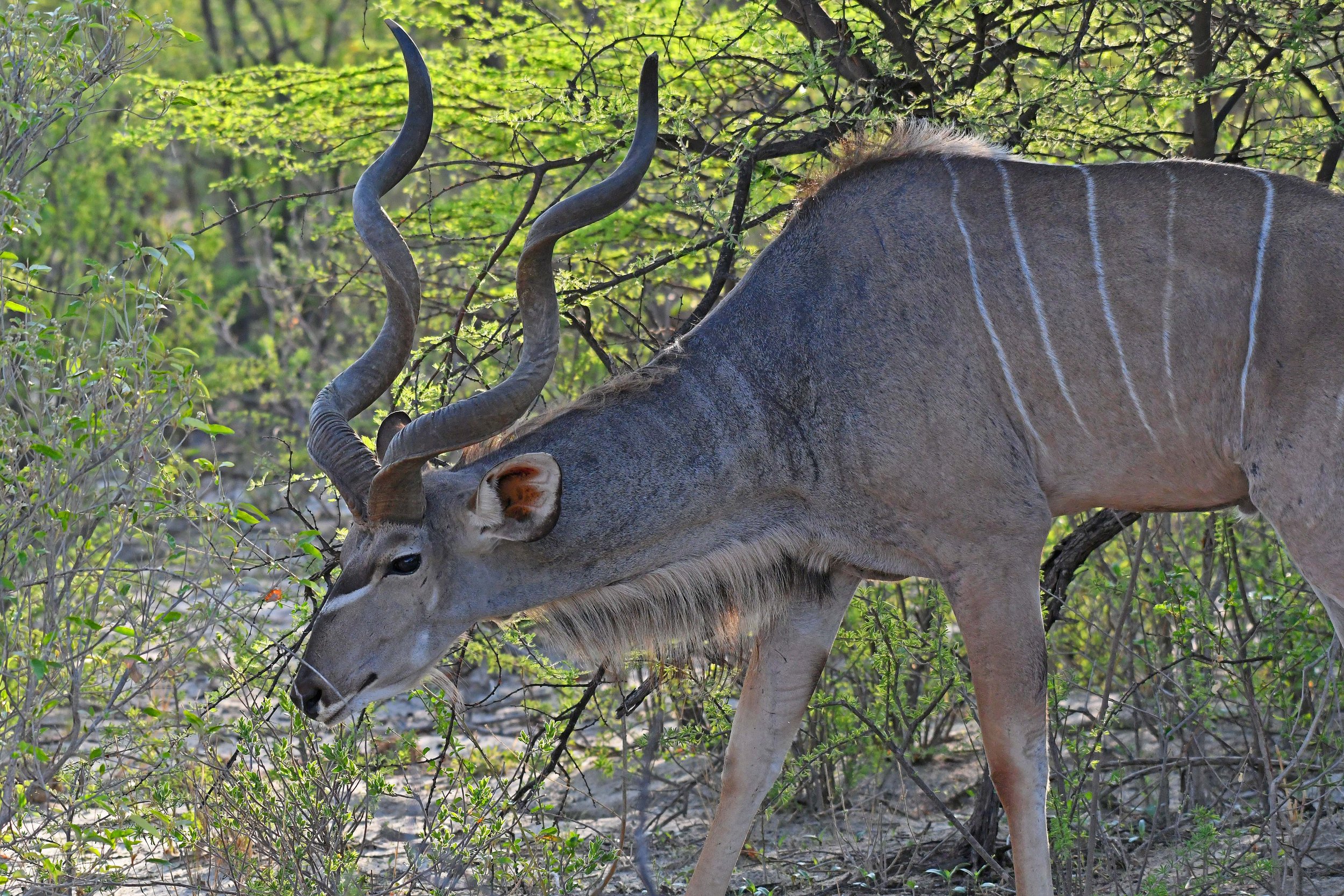
Two and a Half Twists
The greater kudu (Tragelaphus strepsiceros) is a large woodland antelope. Male kudus can weigh as much as 270 kg (600 lbs). As they mature, the kudus’ horns feature two and a half, sometimes three twists. Kudus have a lifespan between 7 and 8 years in the wild. They can’t outrun their predators, but are difficult to spot among the trees.
Etosha National Park, Namibia
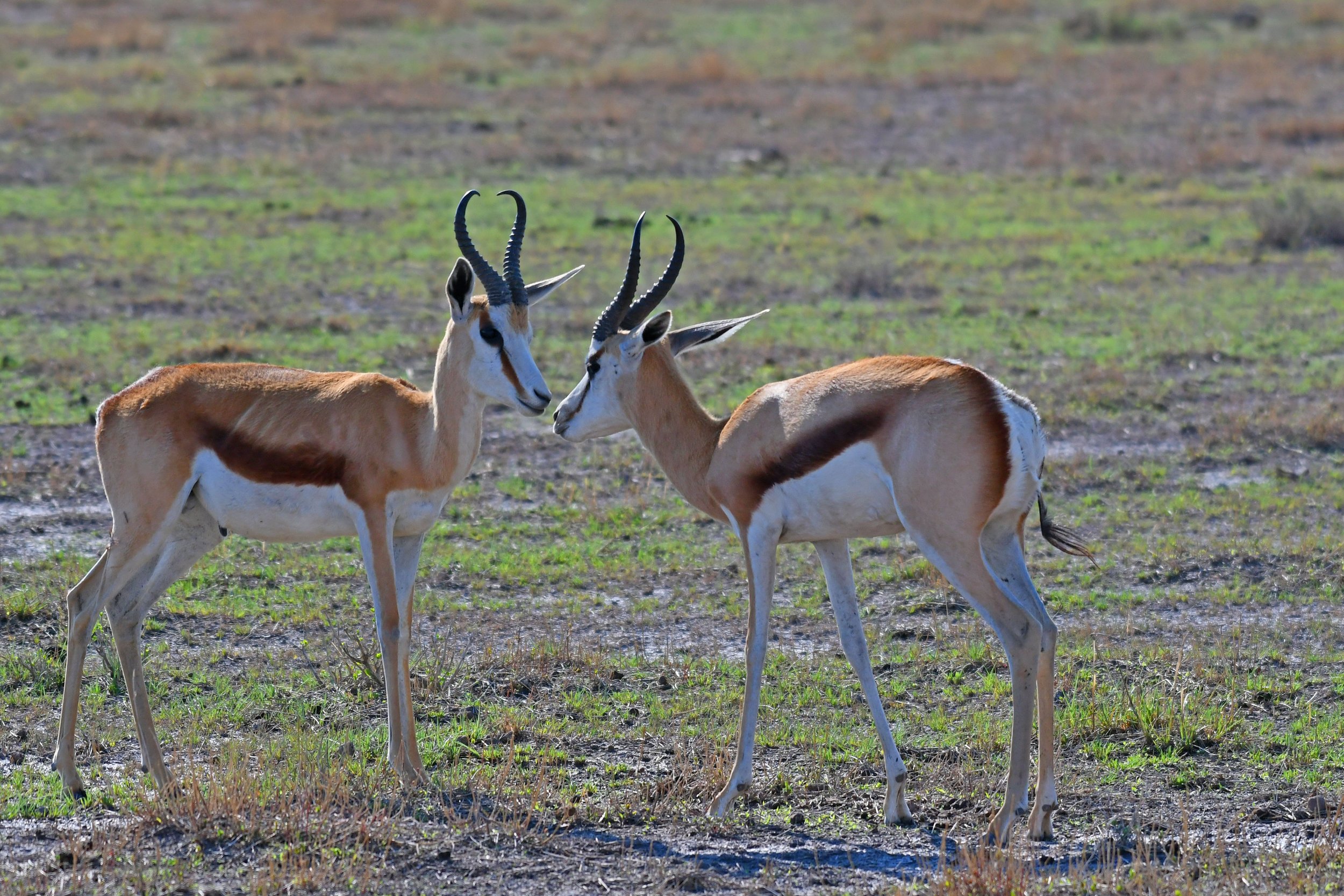
I Love Pronking
The springbok or springbuck (Antidorcas marsupialis) is known for a very peculiar behaviour called “pronking”. Out of a standing position, the springbok jumps 2 m (6.5 ft) vertically into the air. While airborne, the animal’s legs are stiff and the back is curved. The purpose of this exercise is not clearly understood, however, it is believed that pronking happens mostly when the animal is excited or raises alarm about an approaching predator…or maybe the springbok just wants to get a better view.
Etosha National Park, Namibia
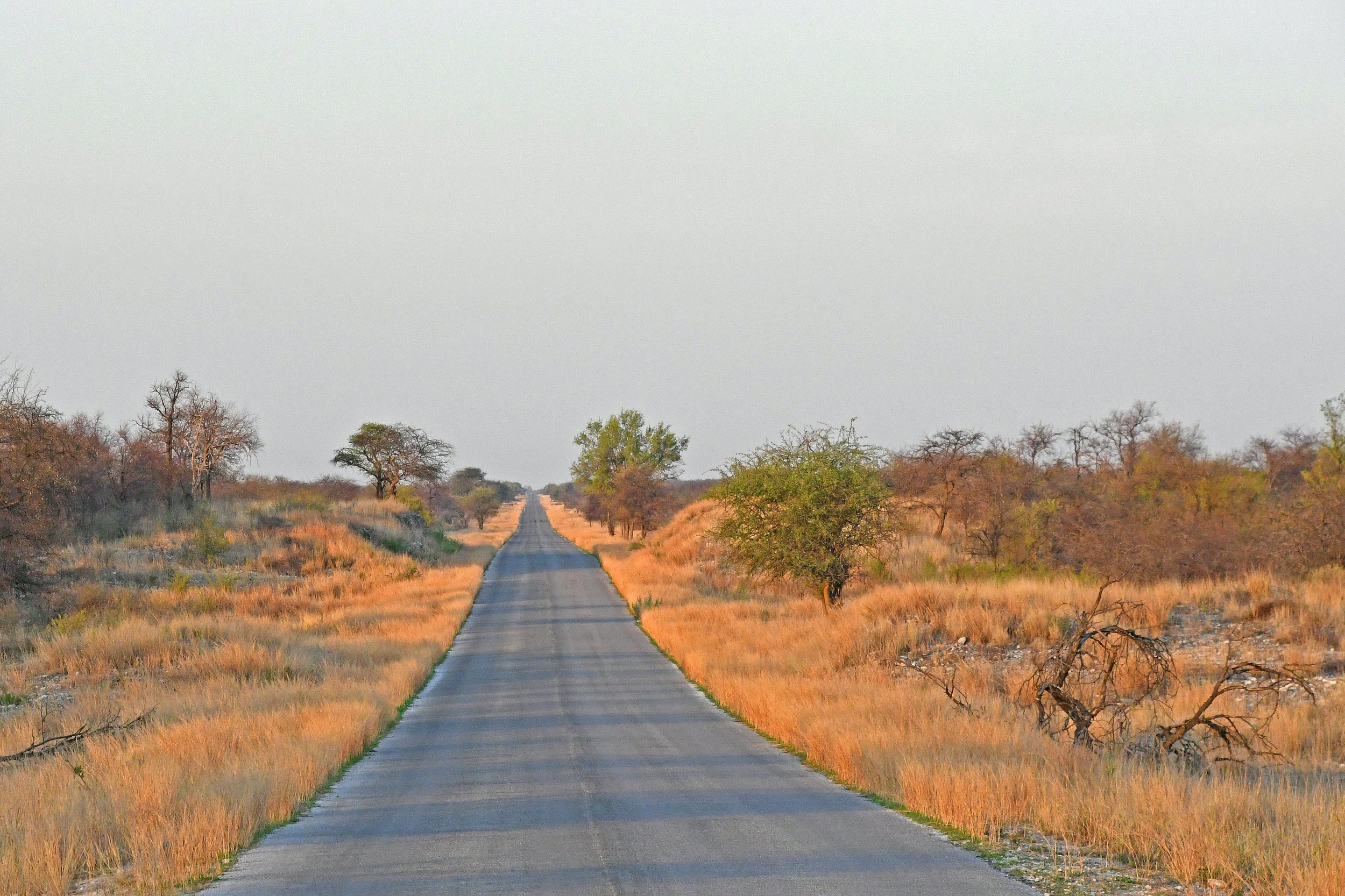
Etosha National Park, Namibia
Road leading into the Etosha National Park.
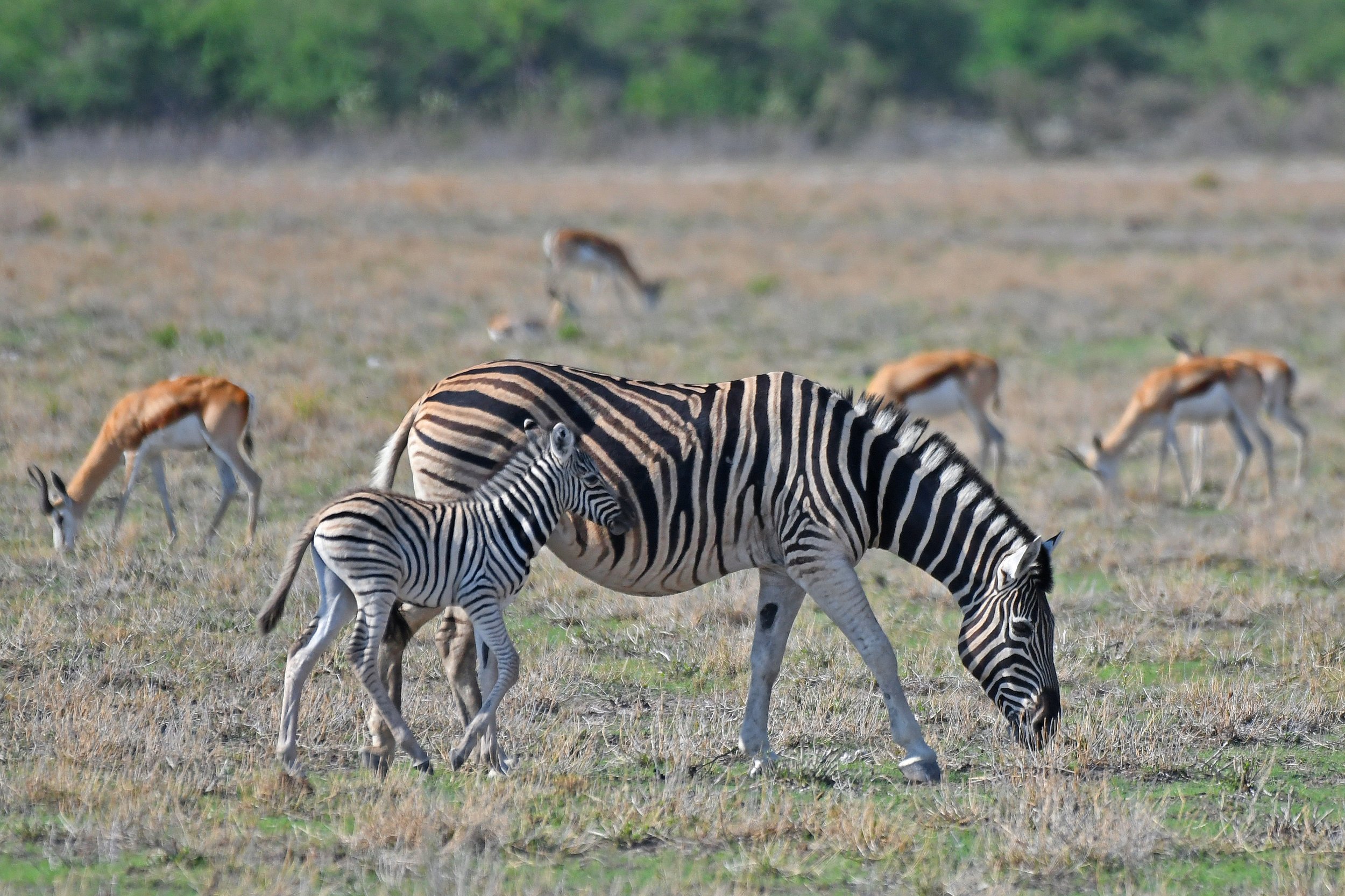
Together
Burchell's zebra (Equus quagga burchellii) with foal.
Etosha National Park, Namibia
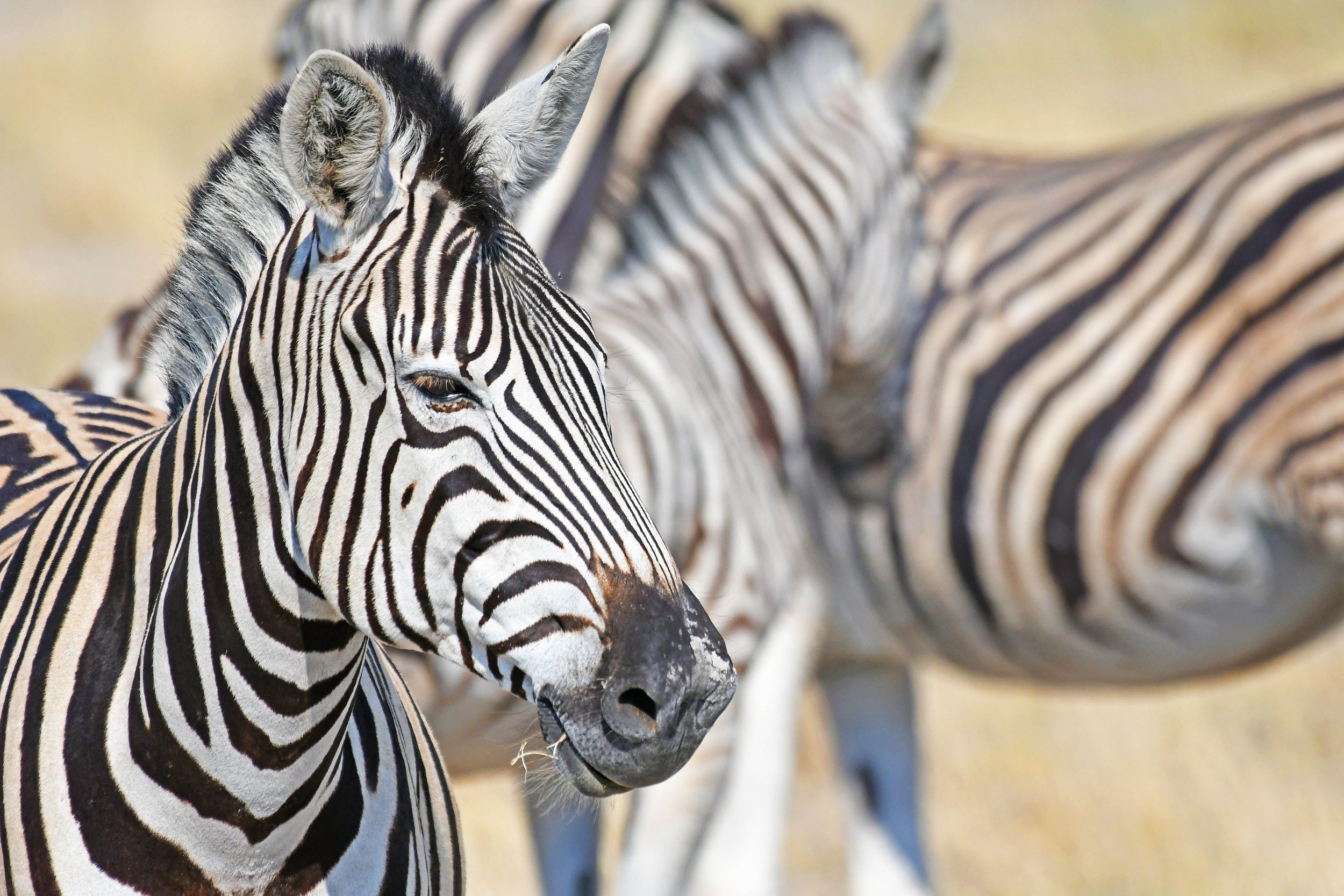
Happiness is Being a Member of a Herd
Burchell's zebras (Equus quagga burchellii)
Etosha National Park, Namibia
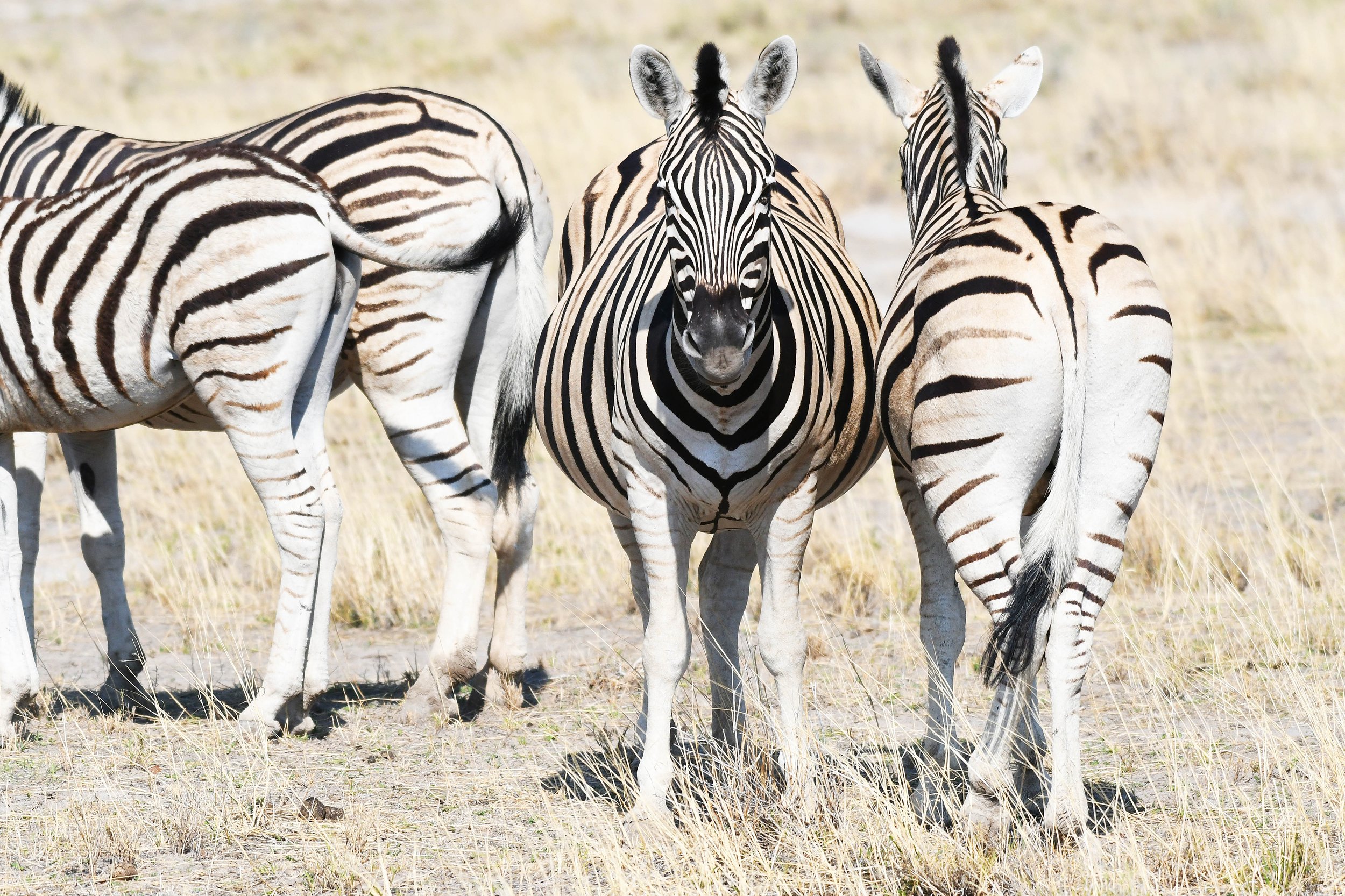
Best to Look at Life from Both Sides
Burchell's zebras (Equus quagga burchellii)
Etosha National Park, Namibia

Don't Mess With These Horns
The red hartebeest (Alcelaphus buselaphus caama) has a peculiar long but perfectly straight forehead. As a large antelope, the red hartebeest lives in the south African savanna and can reach a lifespan of 12 to 15 years. This antelope is mostly non-aggressive, but can get into fights with other males over access to females. It has a highly developed brain and is known to be gregarious and alert.
Etosha National Park, Namibia
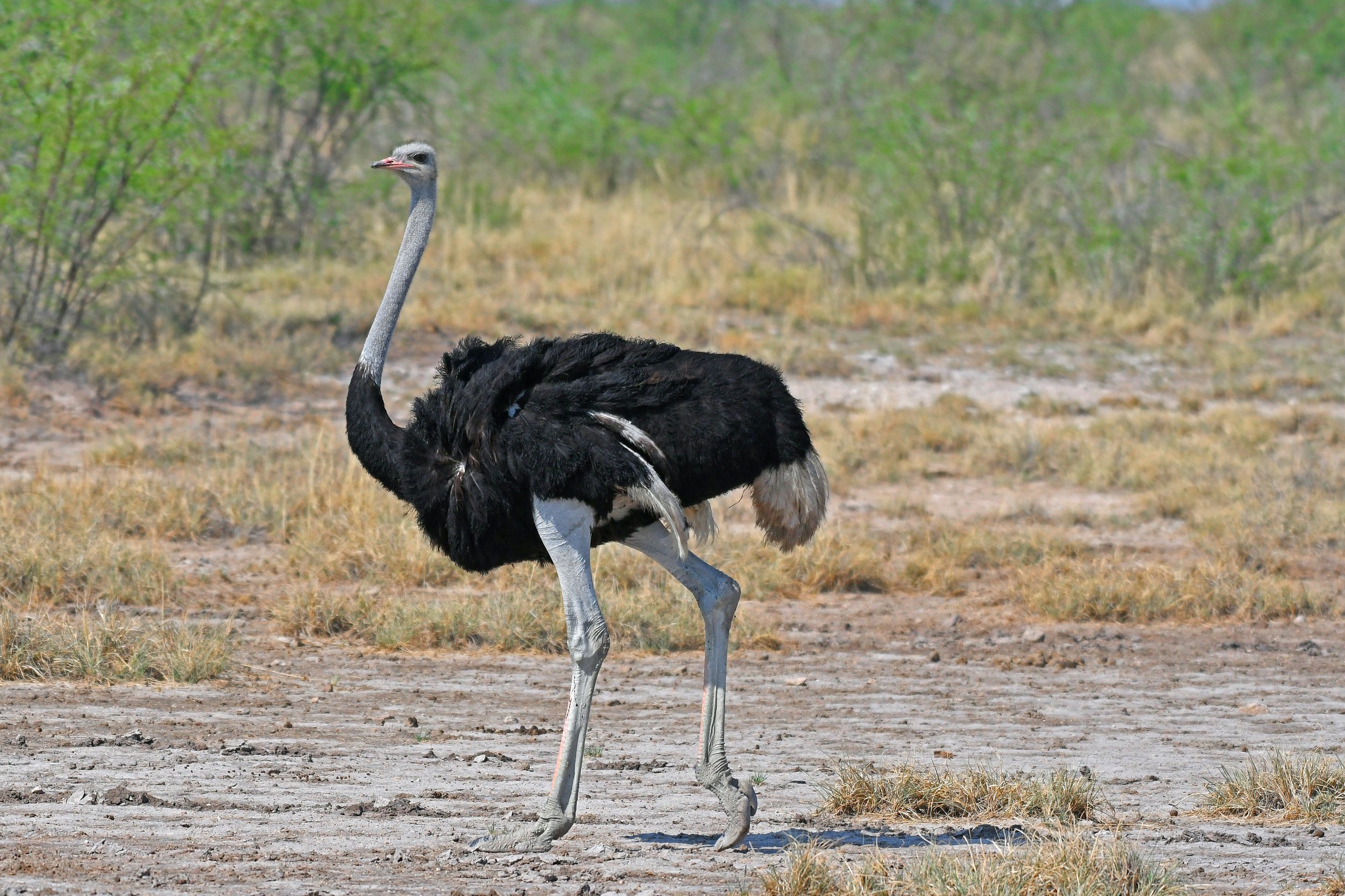
70 km/h (43 mi/h)
Evolutionarily speaking, the common ostrich (Struthio camelus) is an old bird, which makes you wonder given that the ostrich has such a small brain. What the ostrich may lack in intelligence, it makes it up in environmental adaptation and plenty of instinct. This bird can live up to 40 years and is a remarkable running machine. But with a maximum speed of 70 km/h (43 mi/h) the ostrich still is no match for a cheetah.
Etosha National Park, Namibia
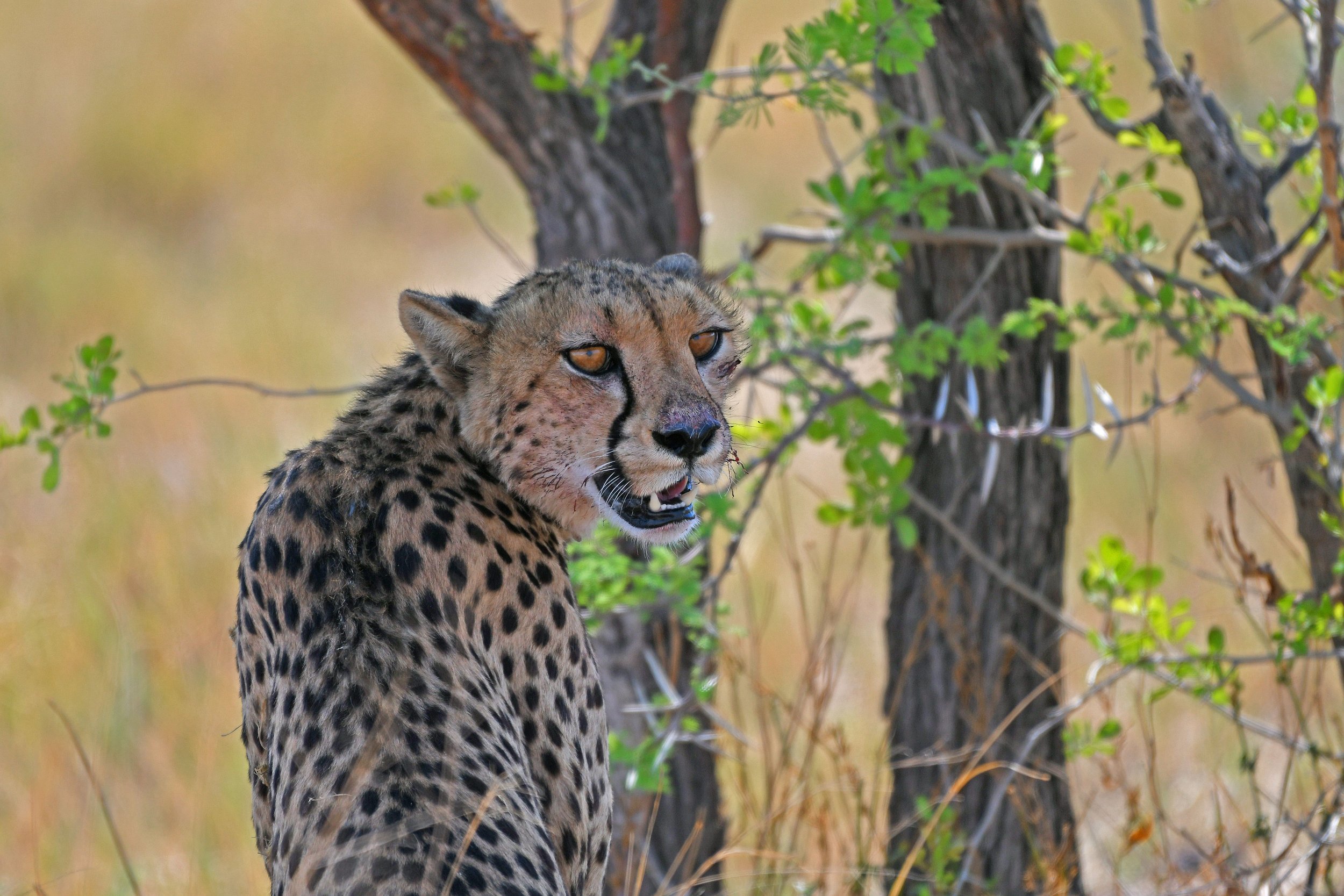
An Elegant Cat
A pregnant cheetah (Acinonyx jubatus) rests in the shade of an acacia tree. Females live mostly solitary lives. Their cubs, usually 3 to 4 cubs per litter, are highly susceptible to predation. Cheetahs are classified as a vulnerable species with only 7,000 animals living in the wild. Cheetahs are the fastest land animal on earth. For brief periods, they can reach speeds of 98 km/h (61 mi/h).
Etosha National Park, Namibia

Thirsty
Disturbed from her rest under an acacia tree, this pregnant cheetah (Acinonyx jubatus) makes her way to the waterhole.
Etosha National Park, Namibia

Burchell's zebras (Equus quagga burchellii)
Etosha National Park, Namibia
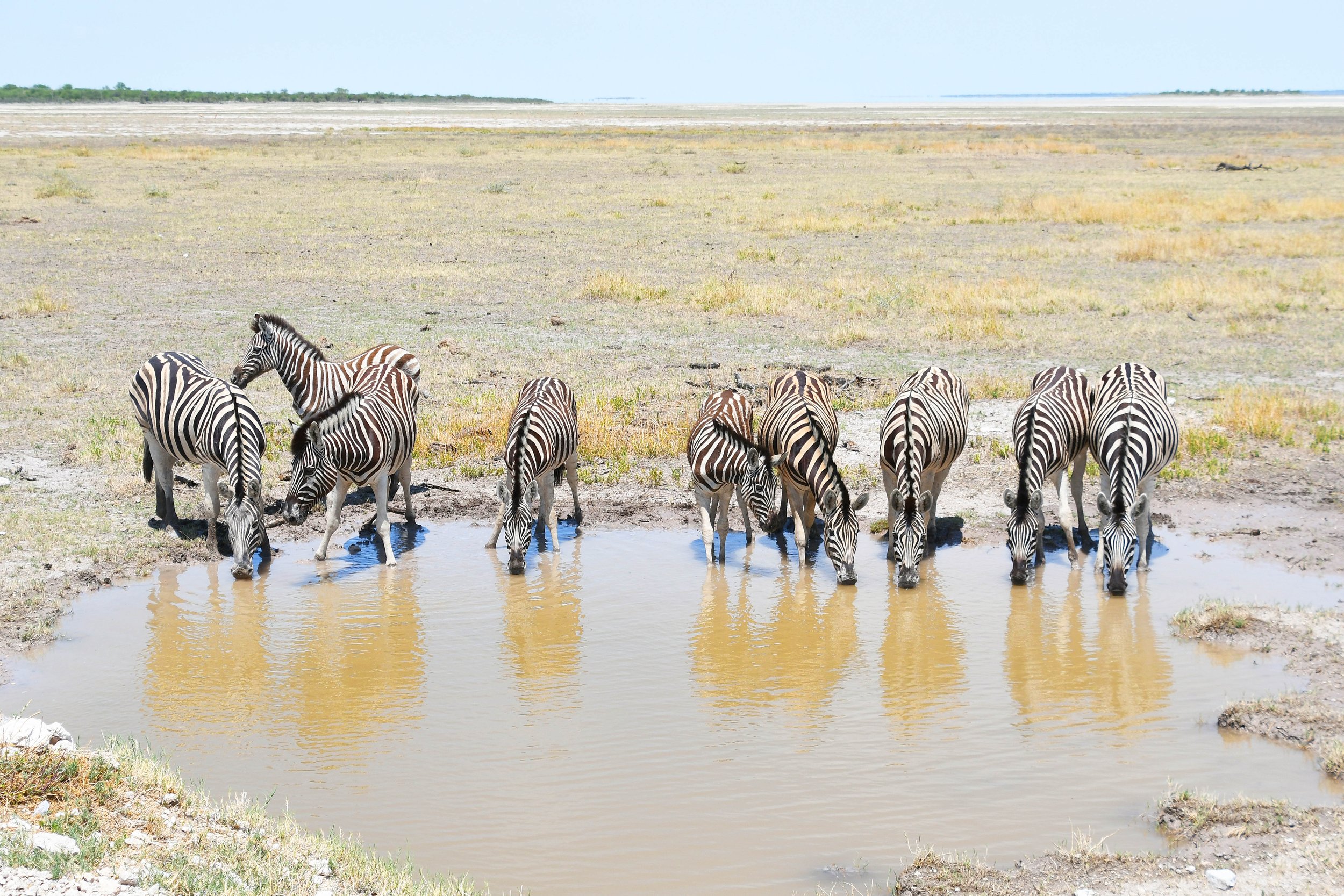
Drinking Party
Burchell's zebras (Equus quagga burchellii) drinking at a waterhole with the Etosha Pan visible in the background.
Etosha National Park, Namibia
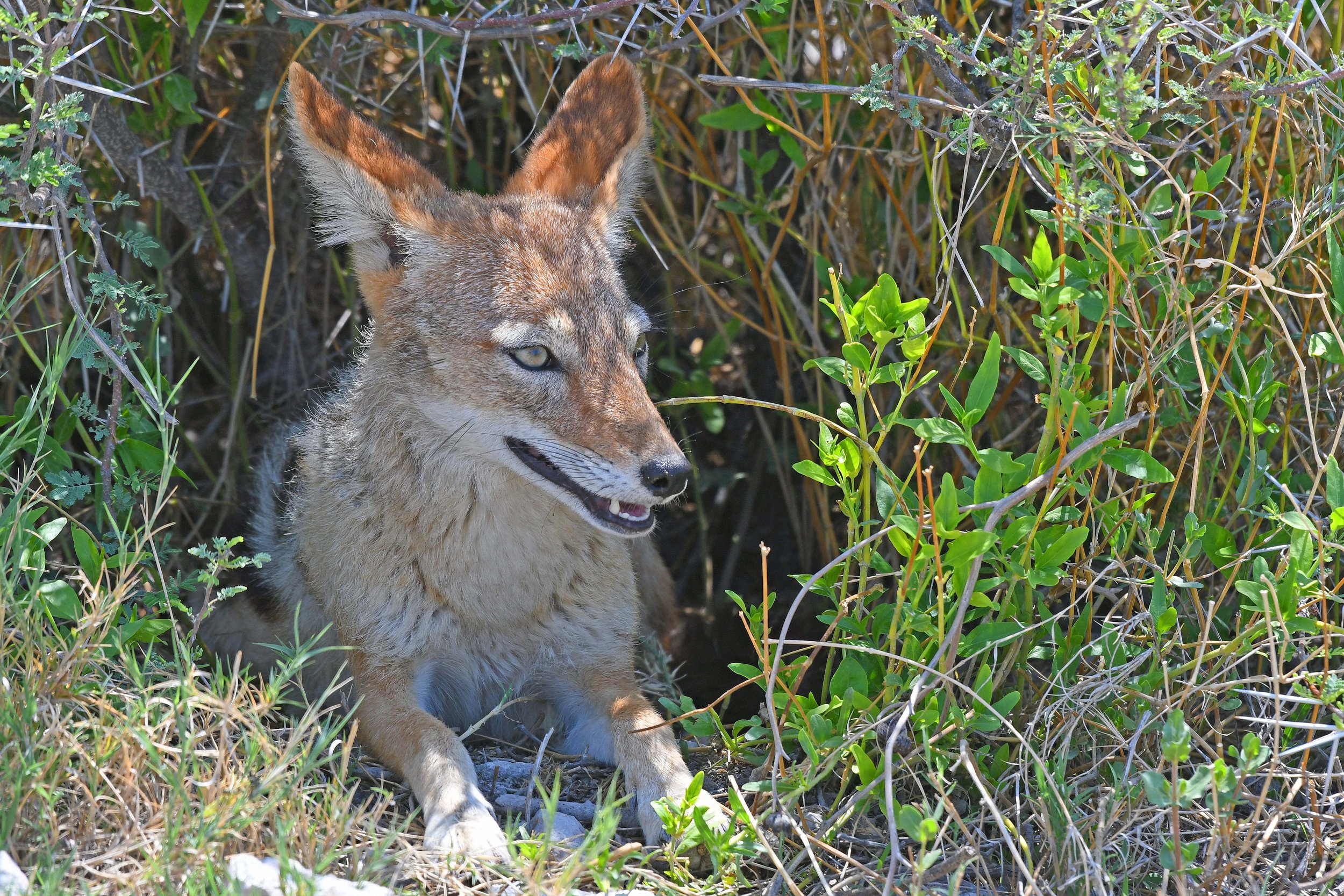
Don't be Fooled
Theis cute black-backed jackal (Lupulella mesomelas) is the most lightly built, but also the most aggressive of the three jackal species. It attacks prey many times its own weight.
Etosha National Park, Namibia
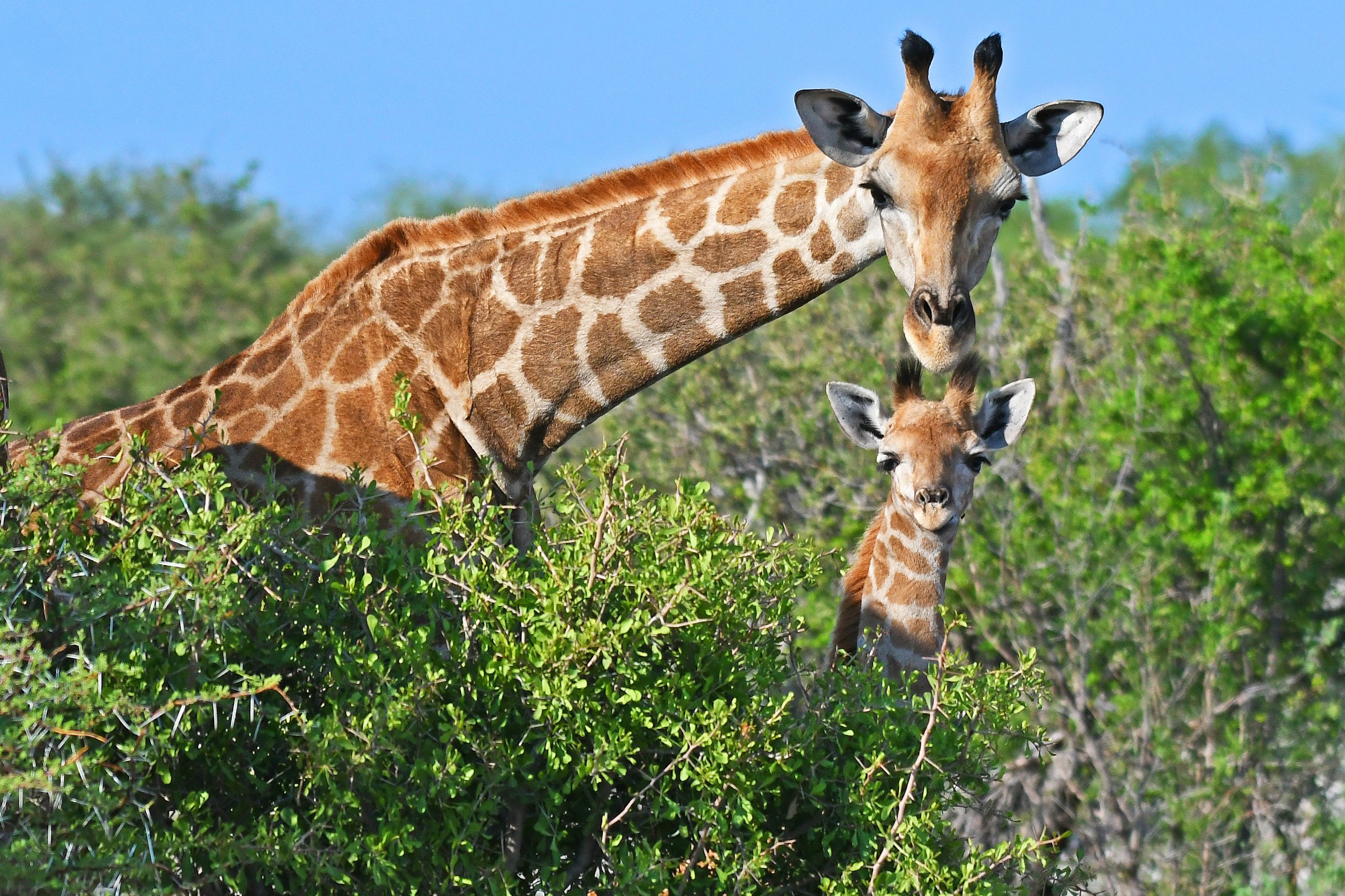
Mother/Daughter Portrait
The giraffes found in northern Namibia are a subspecies of the Angolan giraffe (Giraffa giraffa angolensis). This mother/daughter pair was definitely interested in striking the most favourable pose for a picture.
Etosha National Park, Namibia

Close Call
This Angolan giraffe baby (Giraffa giraffa angolensis) appears to have been attacked by hyenas. The wounds from the attack are still fresh and clearly visible. It is likely that mom intervened just in time and chased the hyenas away. Giraffes are difficult prey to take down, even for lions. They are fast and can fight ferociously when their lives are in danger.
Etosha National Park, Namibia

The Trouble with Long Necks
An adult Angolan giraffe (Giraffa giraffa angolensis) drinking at the waterhole.
Etosha National Park, Namibia

A Troubled Bird
The secretary bird (Sagittarius serpentarius) is mostly found in savanna and grasslands with vegetation shorter than 1 m (3.3 ft). As a terrestrial bird, it prefers to walk, looking for insects, rodents, snakes and occasionally small mammals. The secretary bird’s conservation status is listed as “endangered” due to habitat destruction. It defends a territory as large as 50 sqkm (19 sqmi). Road construction and farming have resulted in rapid population loss over the past several years.
Etosha National Park, Namibia
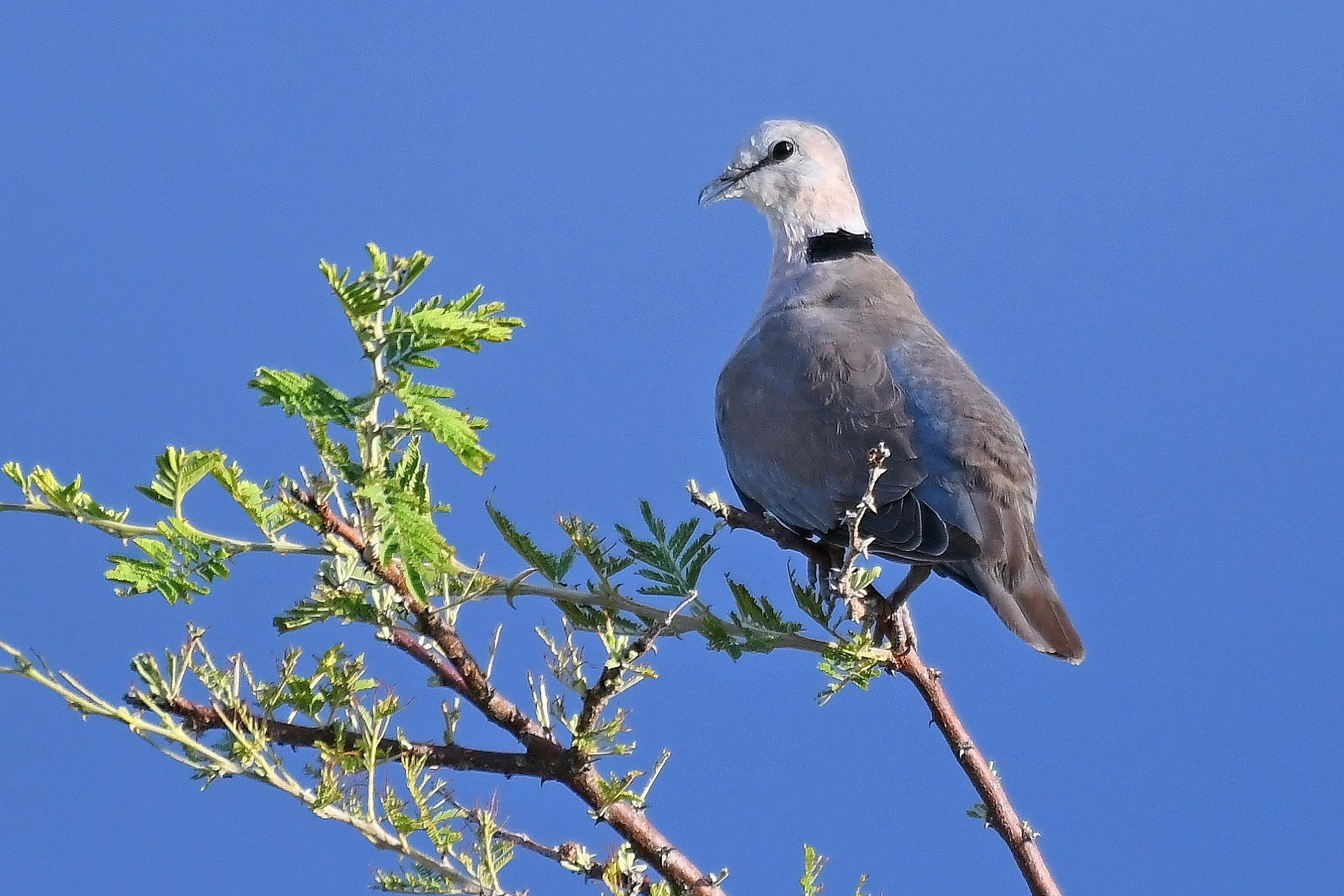
Waterholes are Dangerous Places for this Bird
The name of the ring-necked dove (Streptopelia capicola damarensis) refers to the black half circle around this bird’s neck. Another name for this species is half-collared dove. This bird lives in the arid regions of central south Africa. It needs easy access to open water and is, for that reason, very susceptible to predators at waterholes. The conservation status of the ring-necked dove is listed as “least concern”.
Etosha National Park, Namibia

Tired
A tired African leopard (Panthera pardus pardus) sleeps among low brush in the arid savannah of Etosha National Park. As a prolific and efficient hunter, the leopard is known to have a wide ranging diet. Leopards hunt as many as 92 prey species for food. At times, after killing a small giraffe or an antelope, the leopard drags the body of its victim up into a tree where it is safe from scavengers. Leopards mostly hunt in the morning and evening and sleep during the day.
Etosha National Park, Namibia
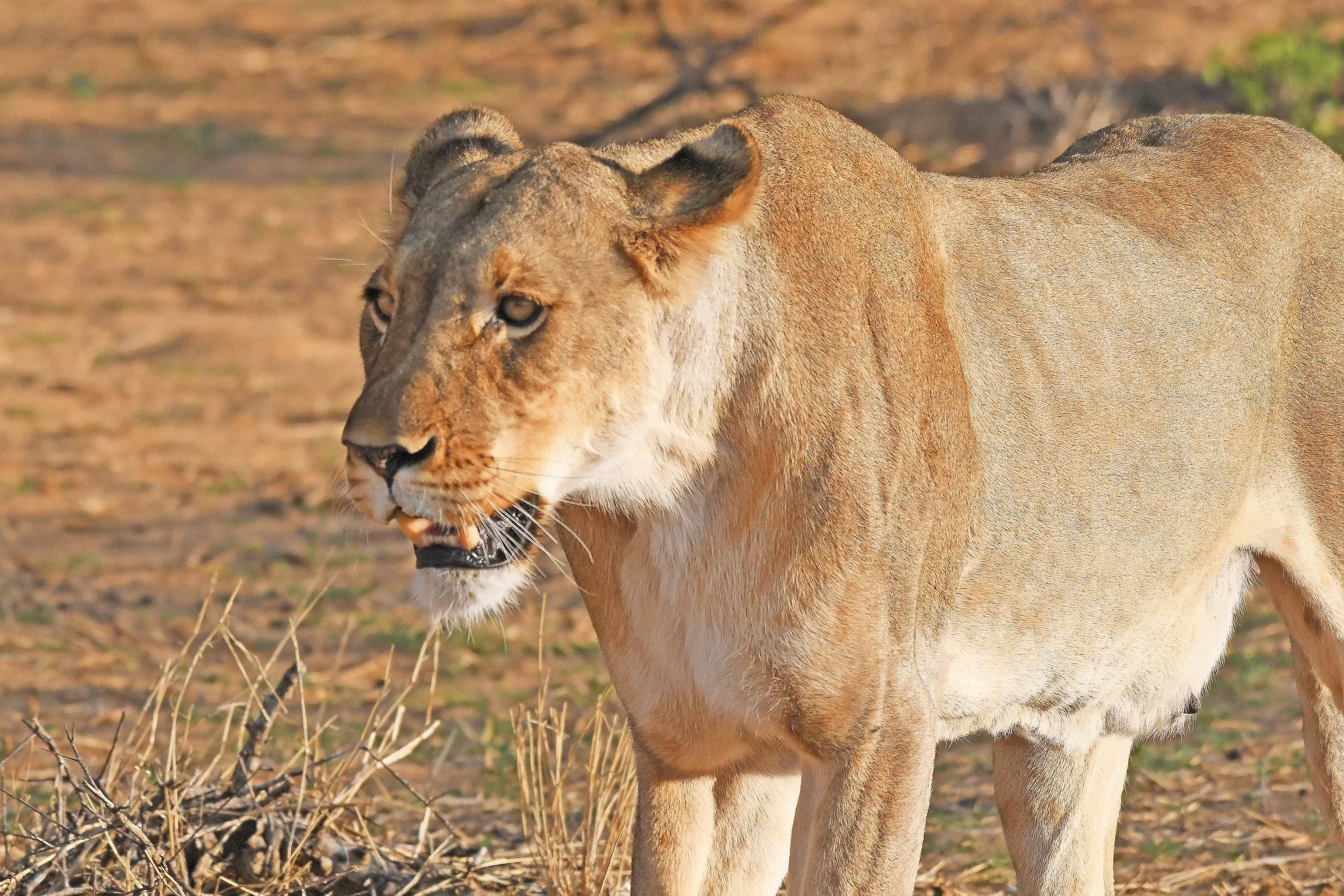
A Thirsty Lioness
This and the subsequent 3 photos show the same lioness (Panthera leo). On her way to the waterhole, this lioness appears hot, exhausted, and thirsty. Making her way slowly through the savanna brush, she seems single-mindedly focused on the refreshing drink just meters away.
Etosha National Park, Namibia

Finally
Having reached the waterhole, the lioness starts to drink. With her eyes nearly closed, I can sense the relief she feels as she takes in water.
Etosha National Park, Namibia
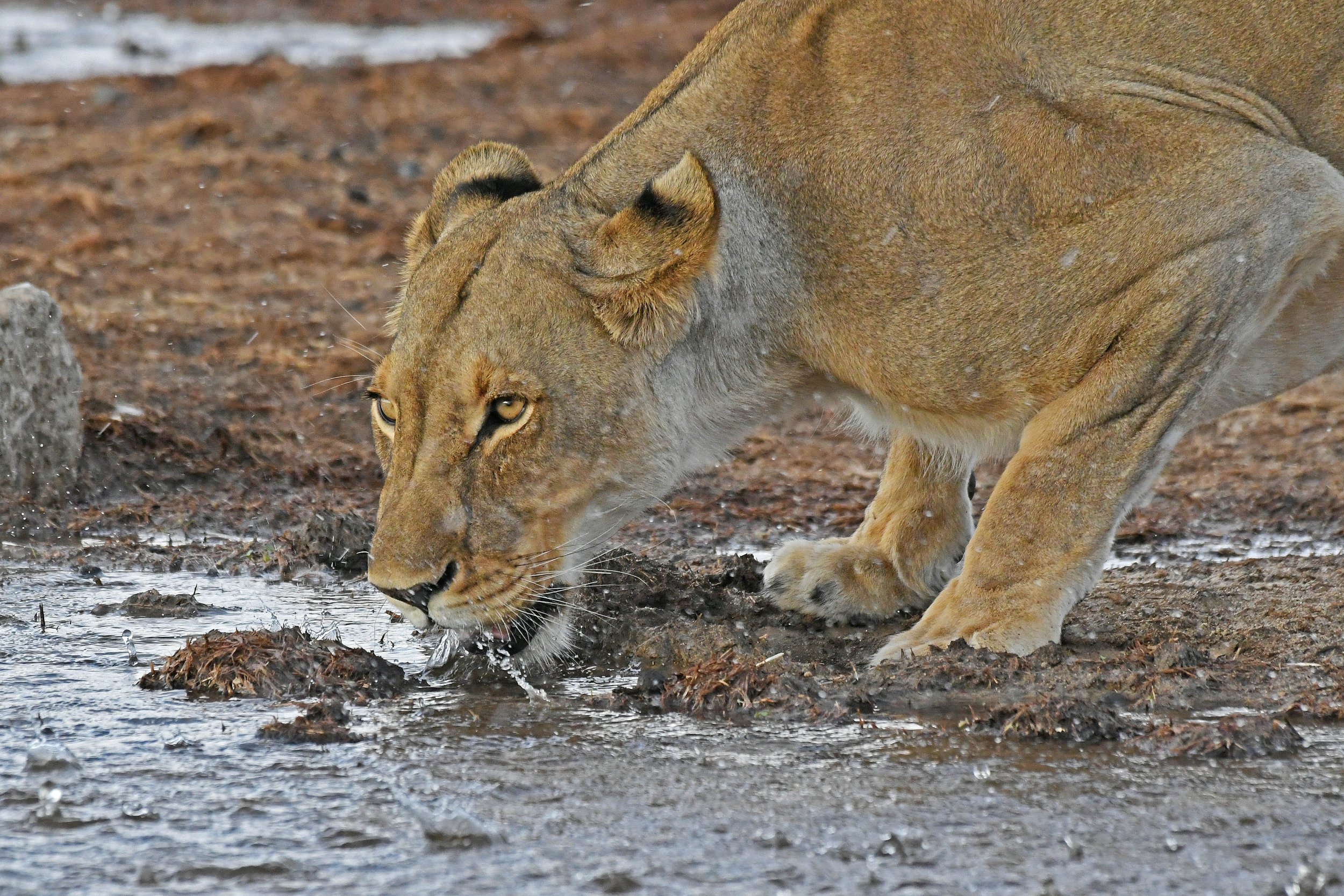
Still Drinking
While watching the lioness drink at the waterhole, clouds move in and it starts to rain. Undeterred, she continues for several minutes until her thirst is quenched.
Etosha National Park, Namibia
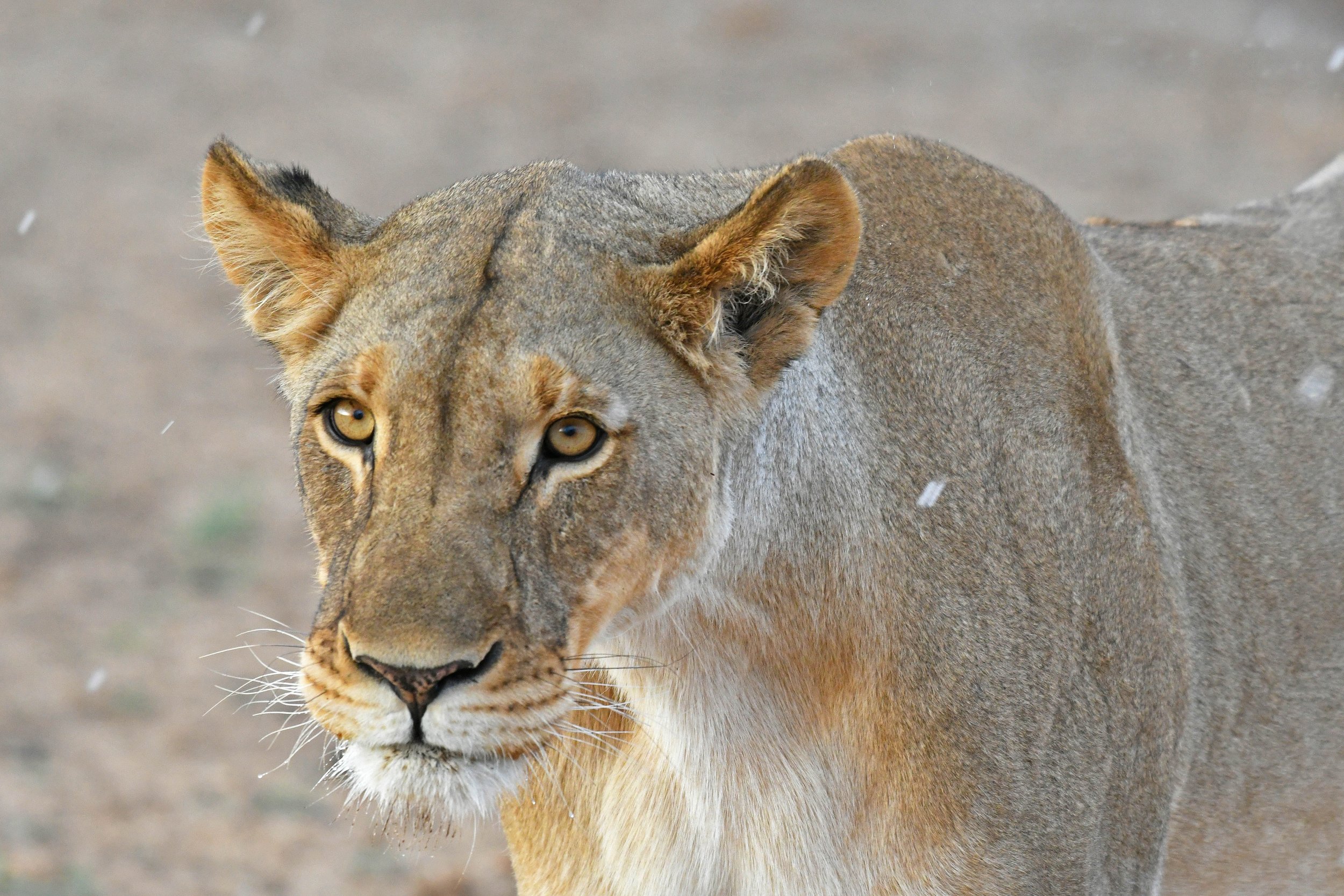
Ready to Return to the Pride
Refreshed and satisfied, our lioness makes her way back to her pride. The stress is gone, her ears are up, and her face shows contentment.
Etosha National Park, Namibia
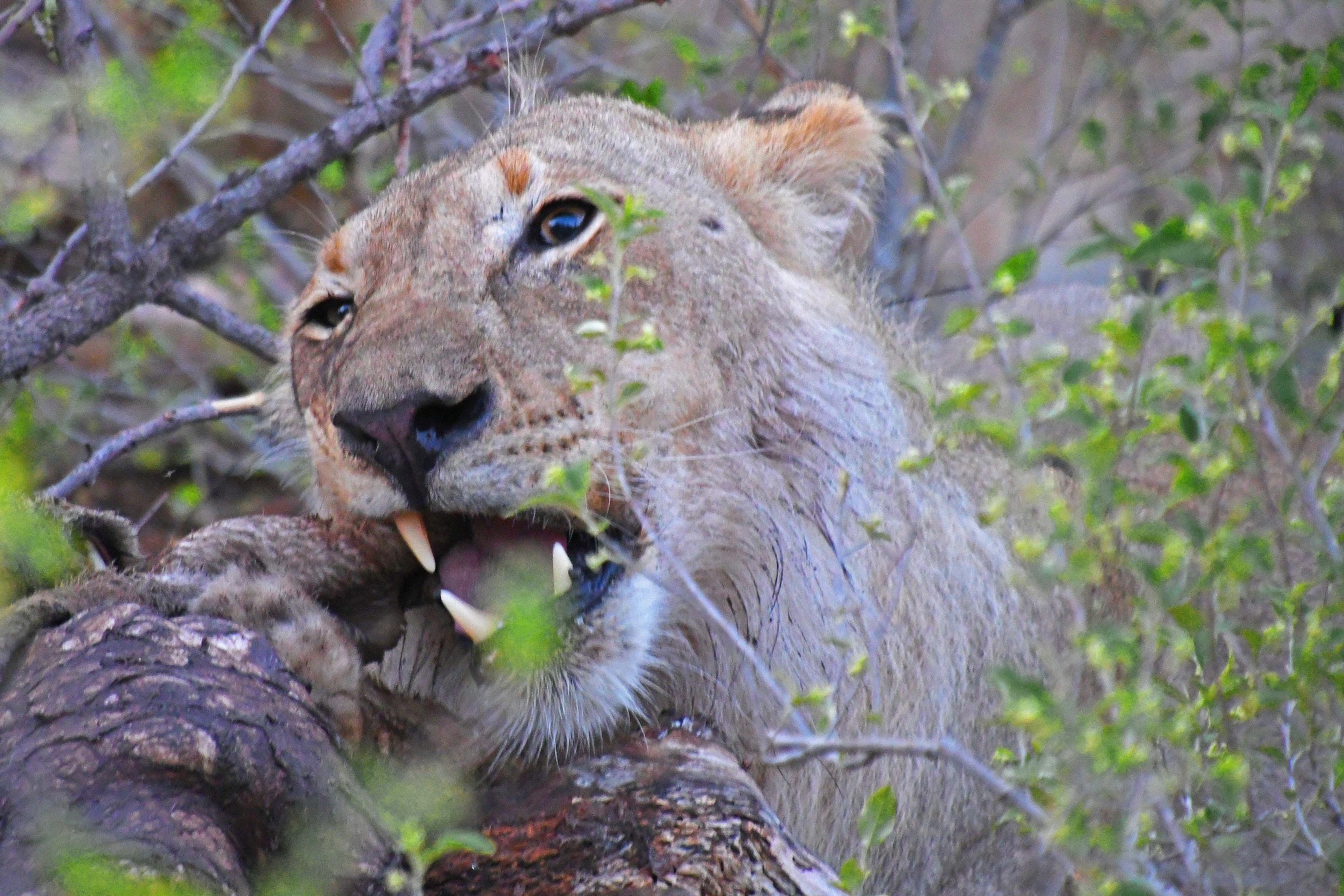
Alone with her Hide
Gnawing on a giraffe’s hide from a kill the night before, this lioness is the only one of her pride to have stayed behind. Her brothers and sisters have left the scene to rest with their stomachs full. The pride killed the giraffe less than 12 hours ago and now there is nothing left but the hide. Hunting is mostly done by prides of female lions, but male lions also hunt, albeit alone or in small groups of males.
Onguma Game Reserve, Namibia

Full Moon at the Waterhole
It is bad timing when you come to Africa to see animals at the beginning of the rainy season. After a couple of downpours, there is water everywhere and the animals don’t have to come to the waterhole to drink. Of course, the waterholes are the best place to observe wildlife during the dry season. This waterhole is behind the Onguma Game Reserve “Fort”. No animals tonight, aside from a couple of hyenas and jackals.
Onguma Game Reserve, Namibia

Easy Access to Water
After a rainstorm, there is water everywhere, giving the bush animals easy access to water.
Onguma Game Reserve, Namibia

Lonely
Lonely for her brothers and sisters, this lioness uses guttural sounds to call the members of her pride. A couple of minutes later, they show up and greet each others as if they had not seen each other in years. A heart-warming scene!
Onguma Game Reserve, Namibia
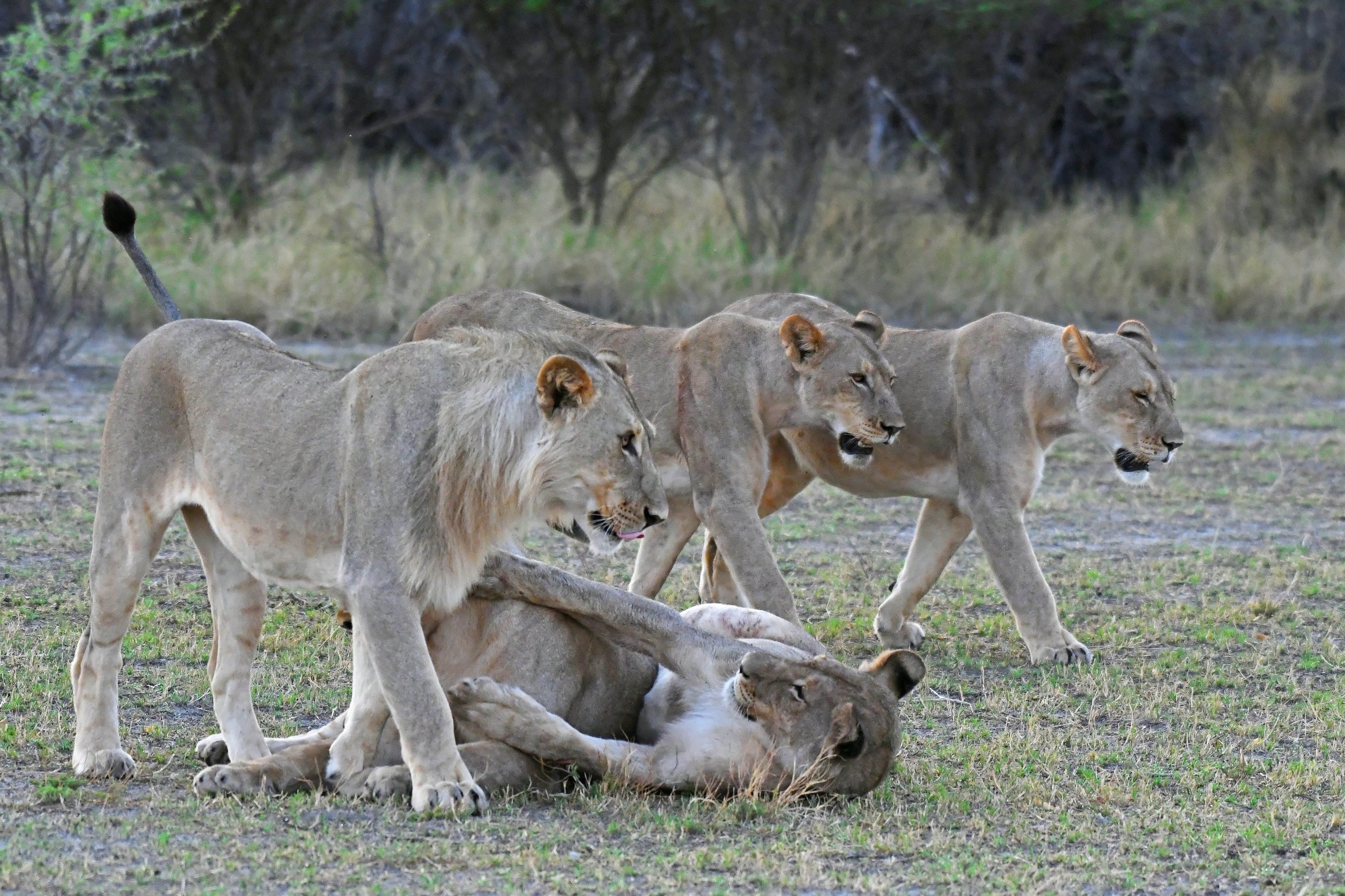
Where Were You?
This pride is reunited following some time of separation. After killing and feasting on a giraffe, their stomachs are full and everybody is ready for a nap.
Onguma Game Reserve, Namibia
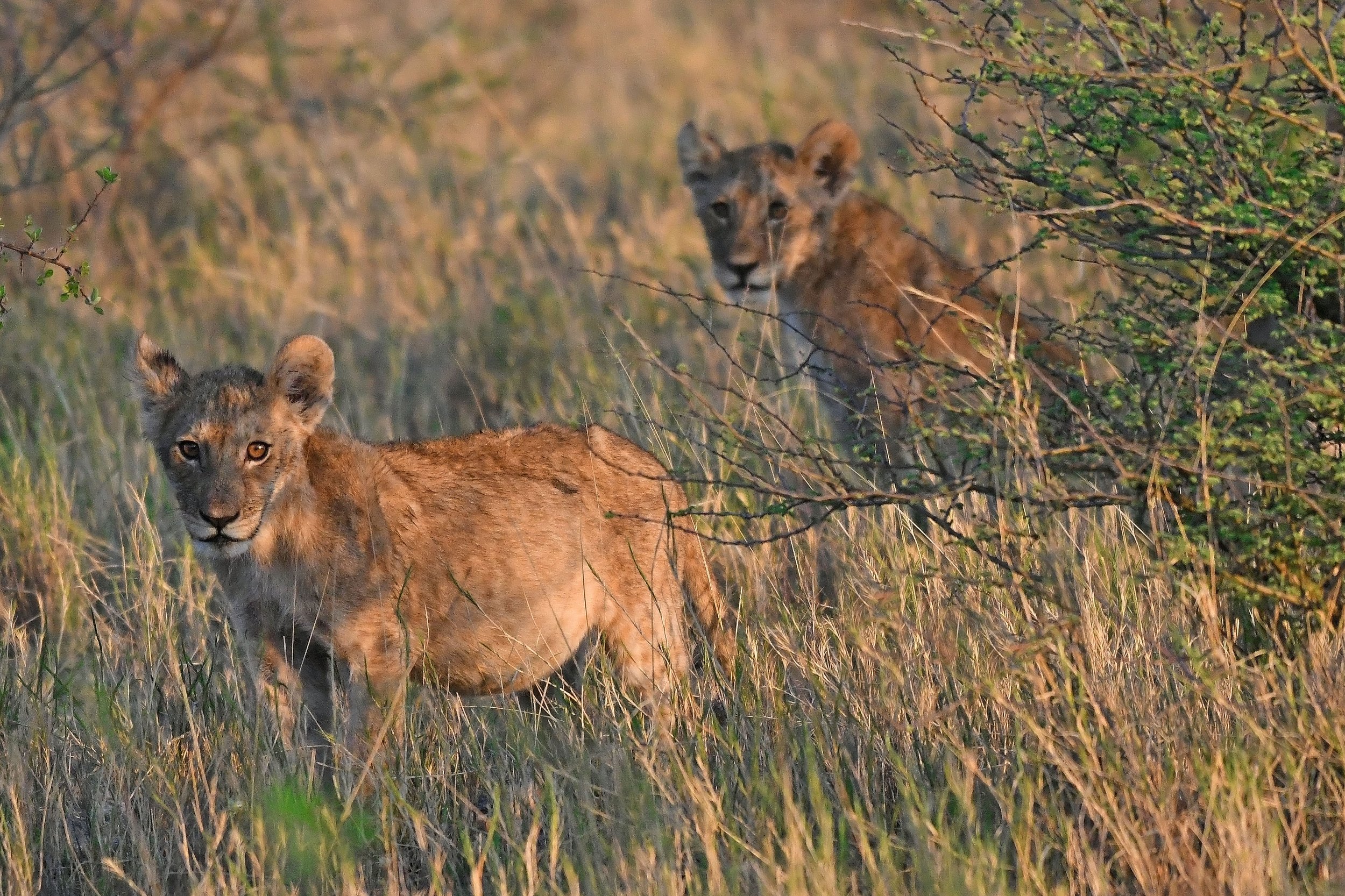
Even the lion cubs’ tummies are full. It is hard to play after a big meal!
Onguma Game Park, Namibia
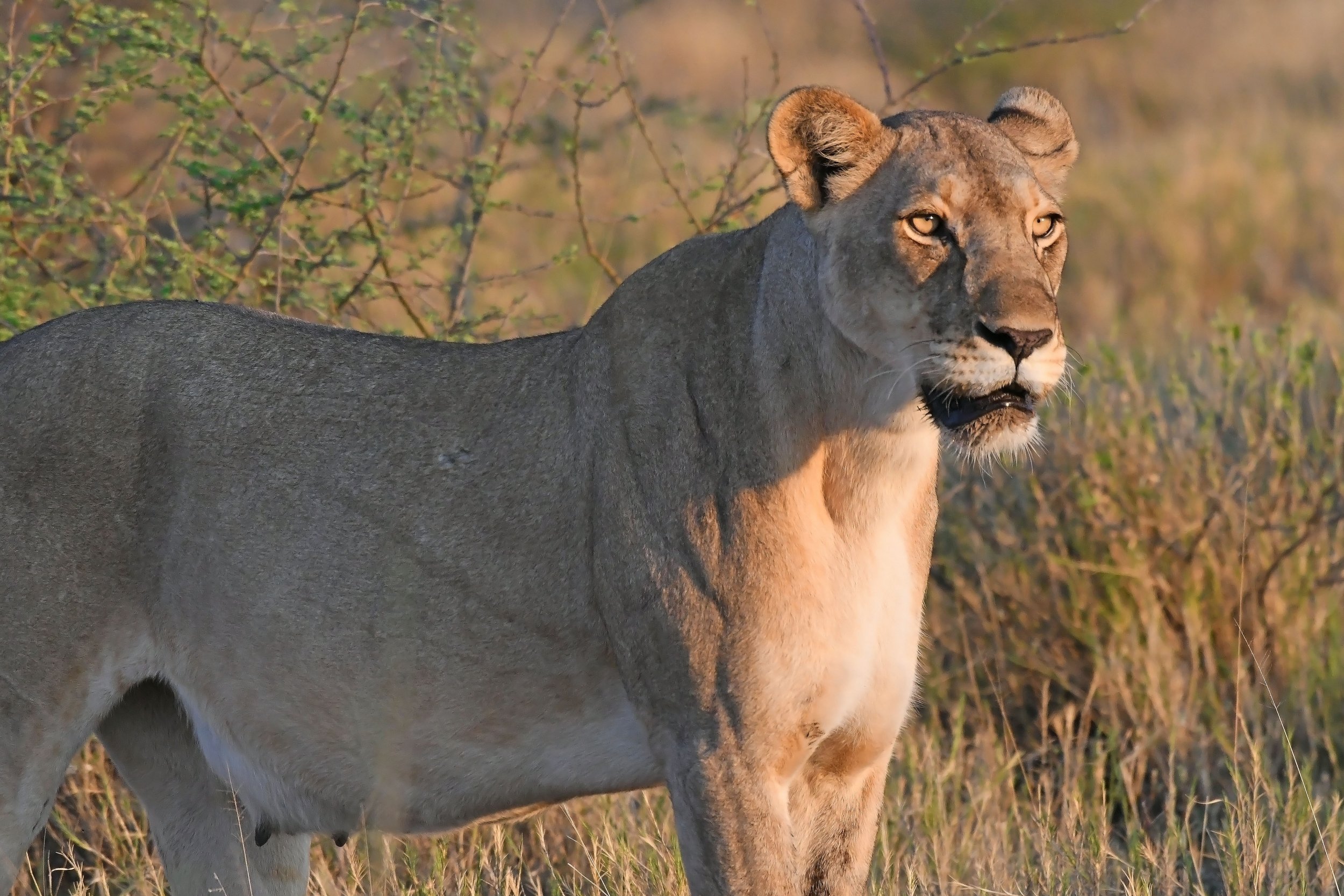
Lioness Mom
Mom is keeping a close eye on her offspring.
Onguma Game Park, Namibia
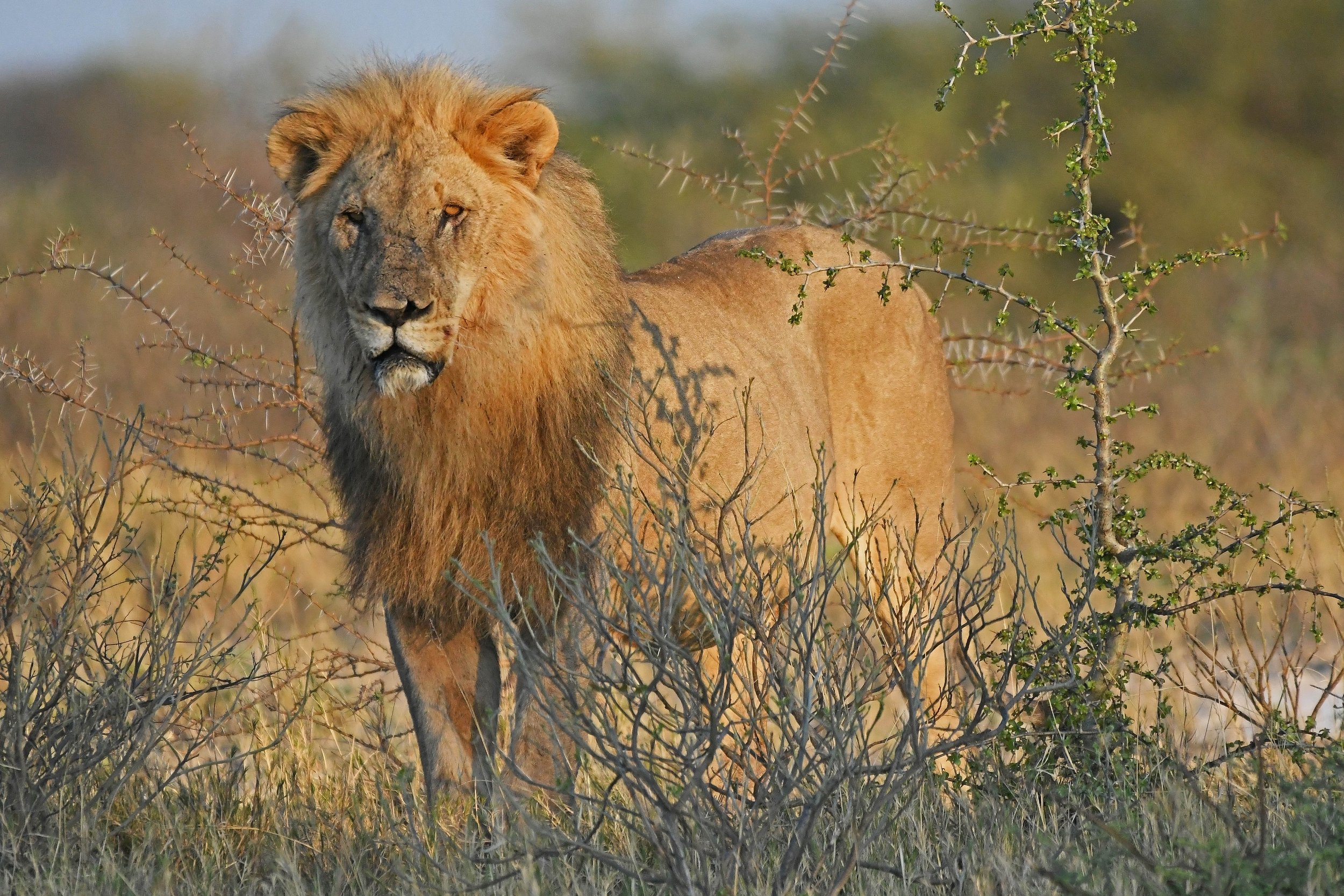
Male Lion
Always keeping his distance from the family.
Onguma Game Park, Namibia
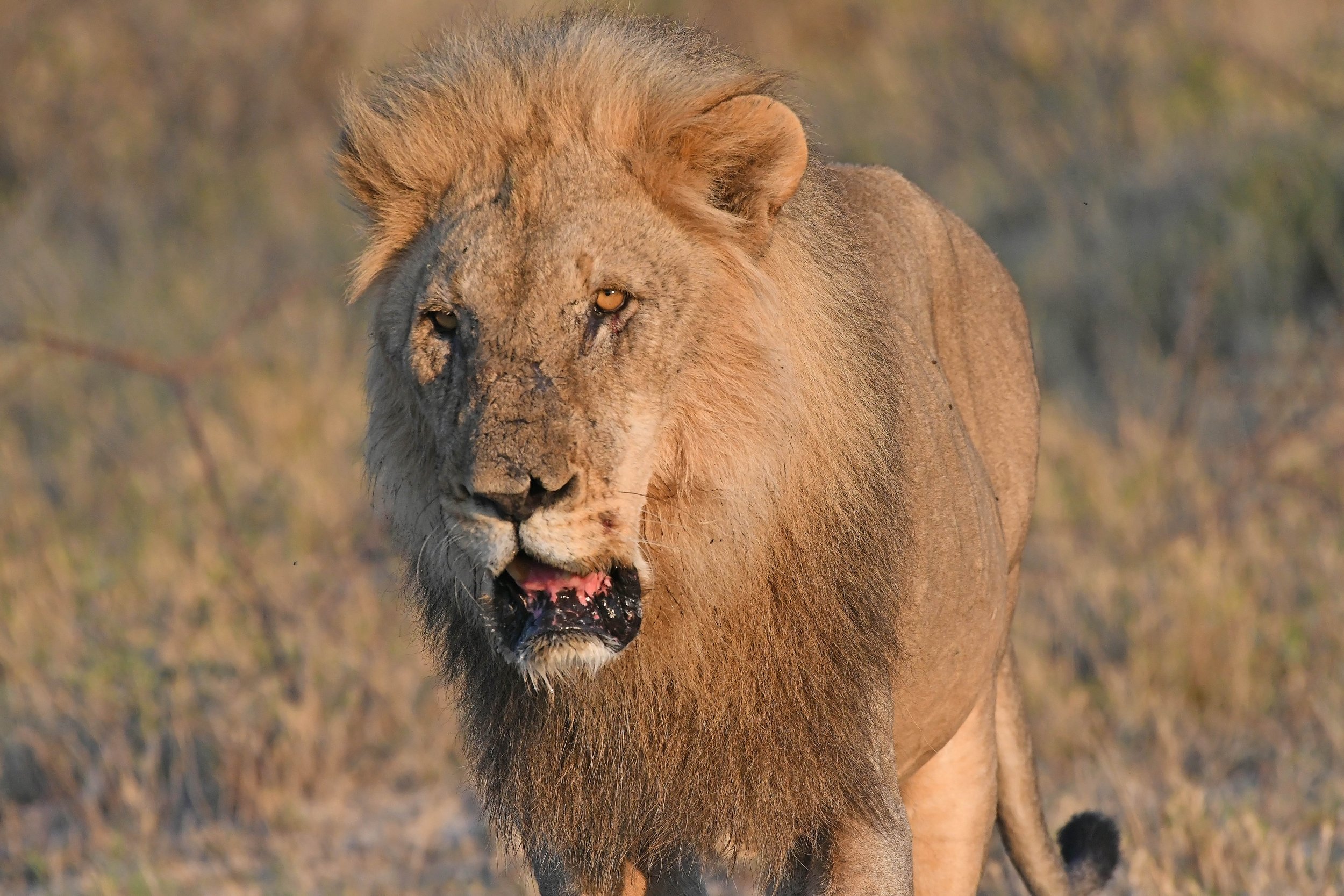
Marked for Life
Defending one’s pride is not easy. The marks on the face of this male lion (Panthera leo) tell a story of numerous fights with male challengers.
Onguma Game Reserve, Namibia
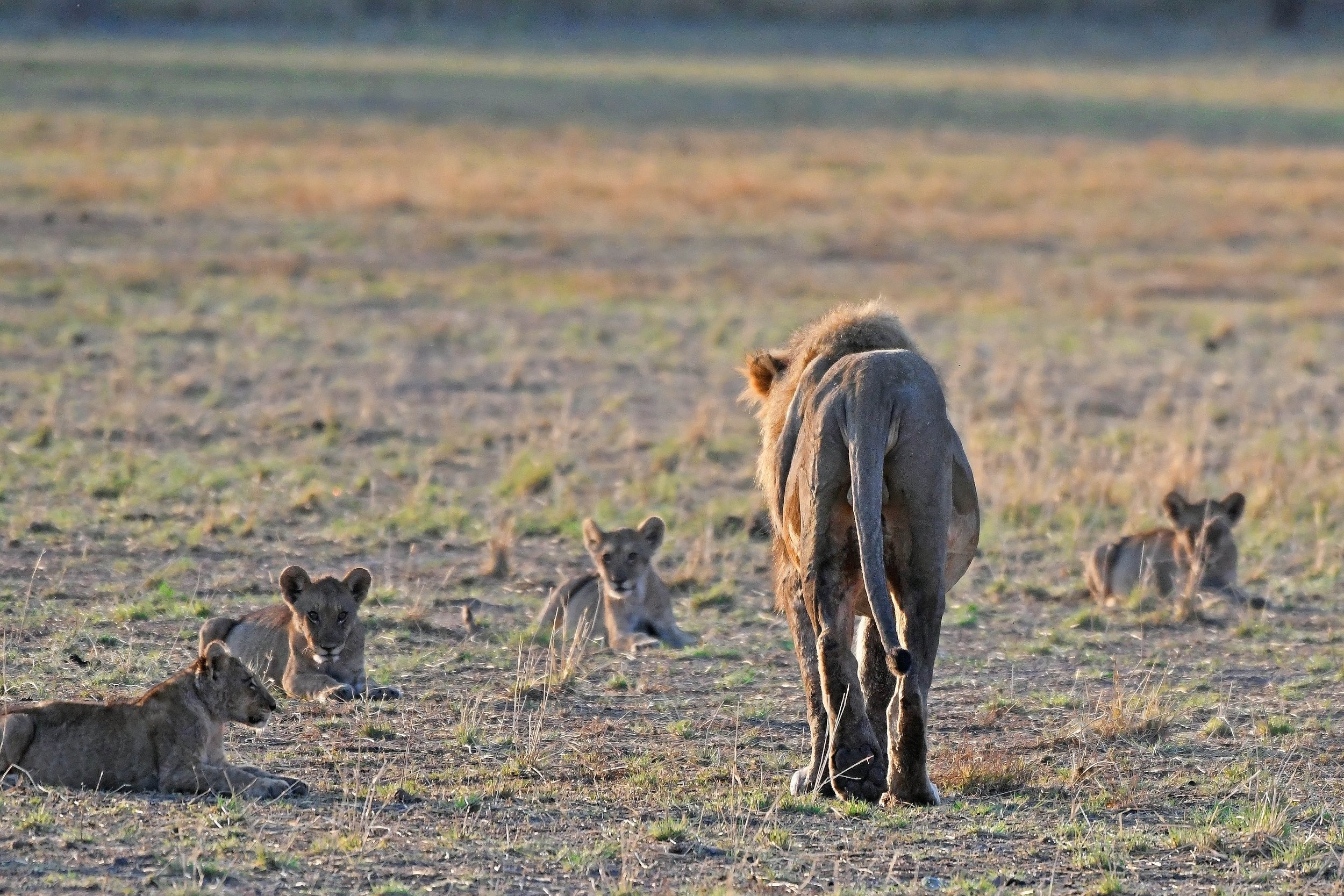
Inspecting the Troops
This male lion walks past his offspring. Interestingly, only the female cubs are not afraid of dad. The male cubs are with mom. Male cubs have a complicated relationship with dad.
Onguma Game Reserve, Namibia



